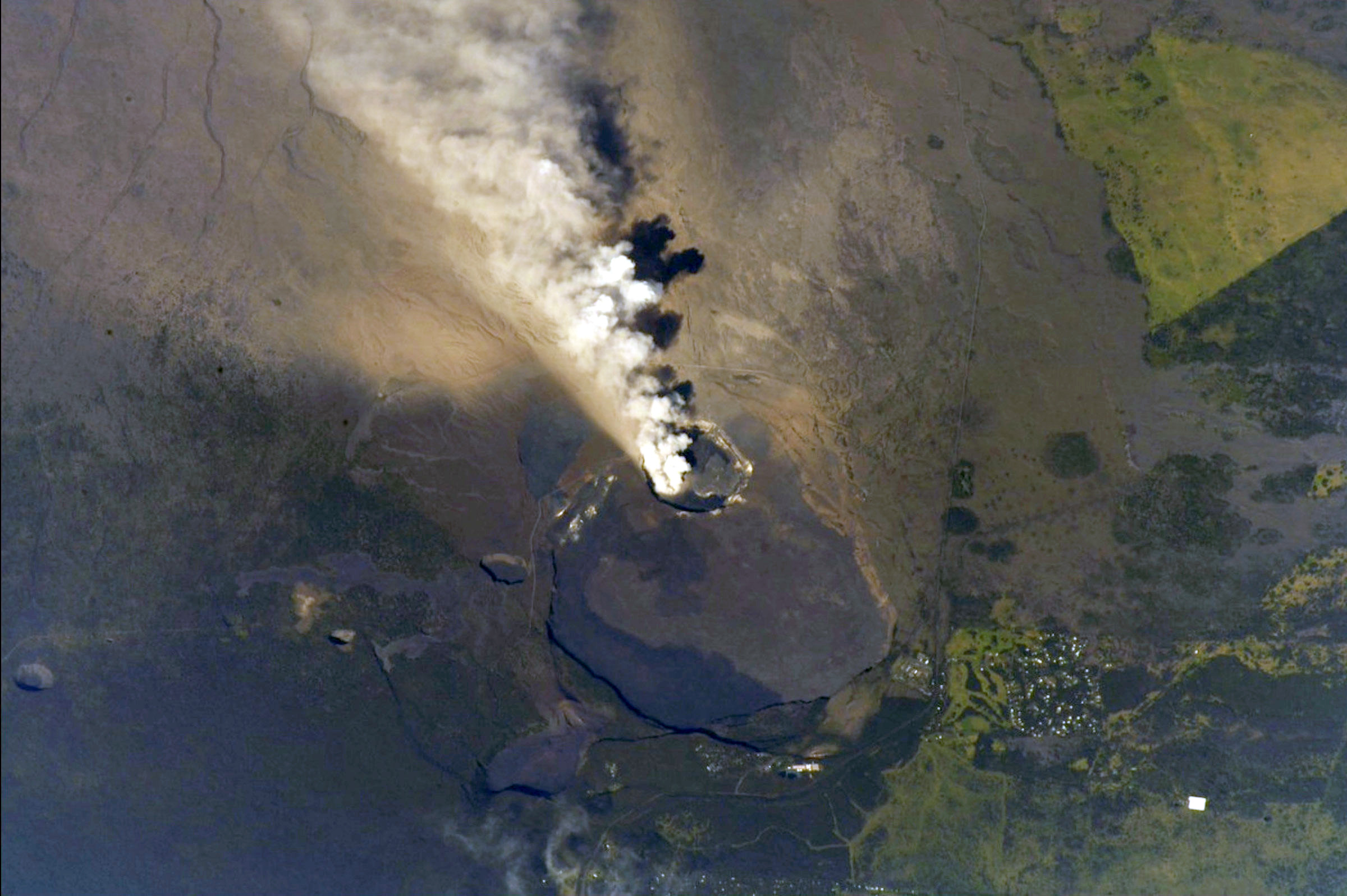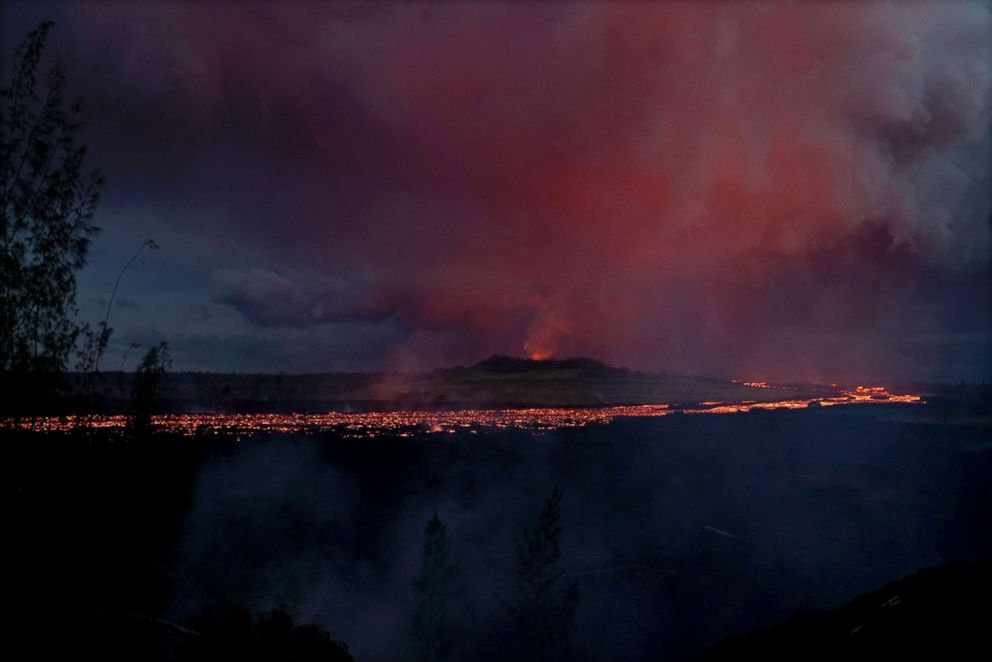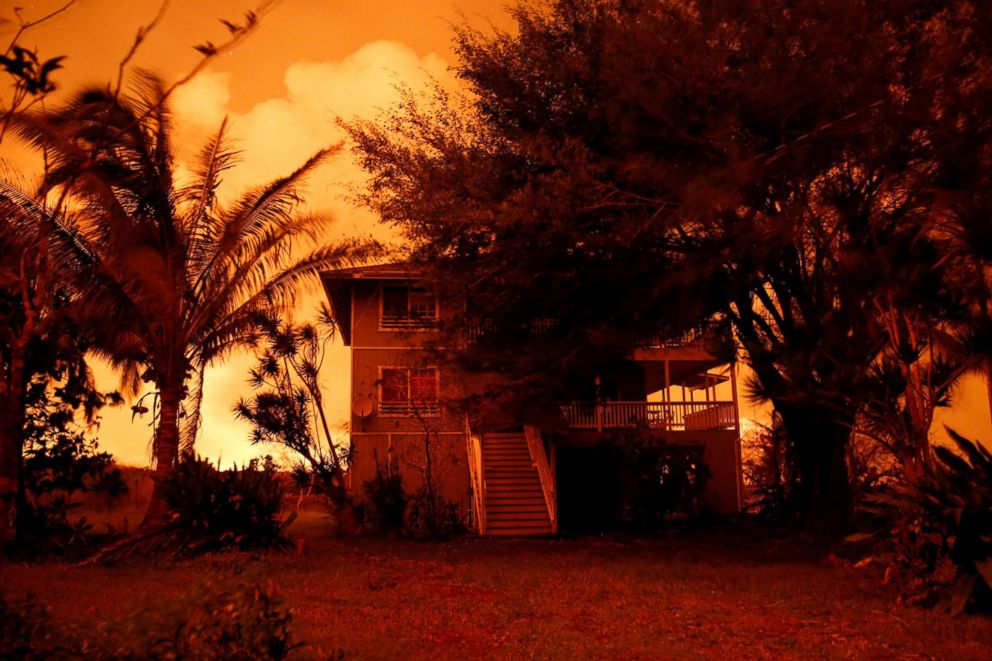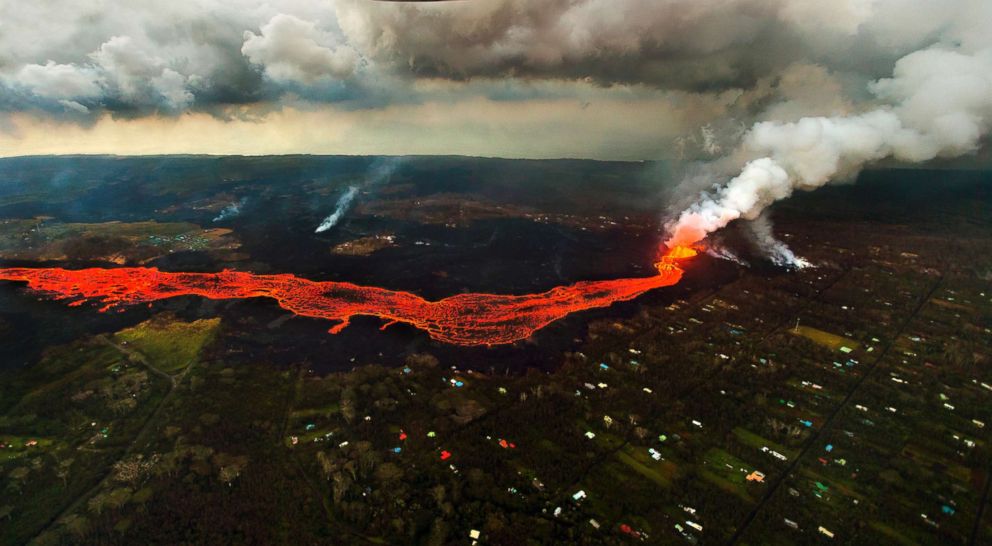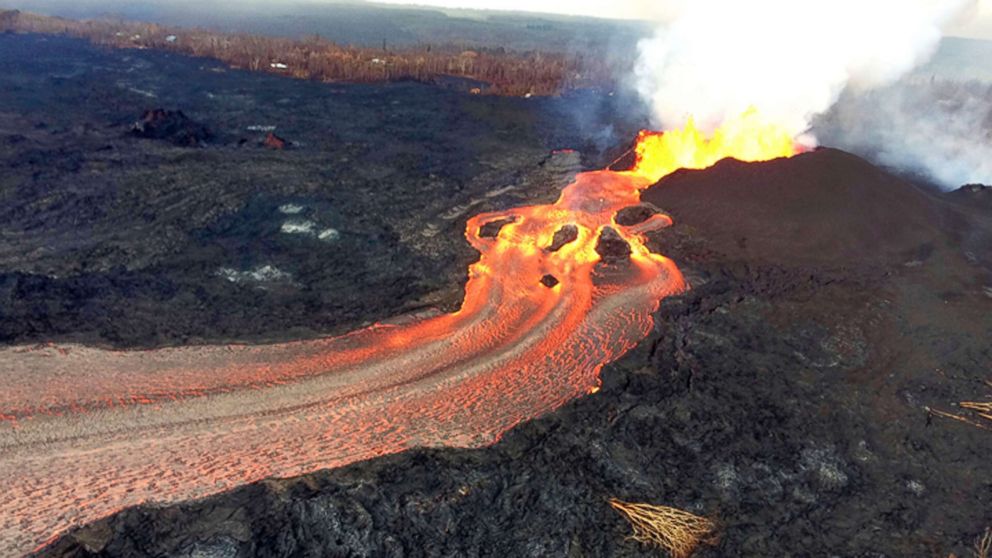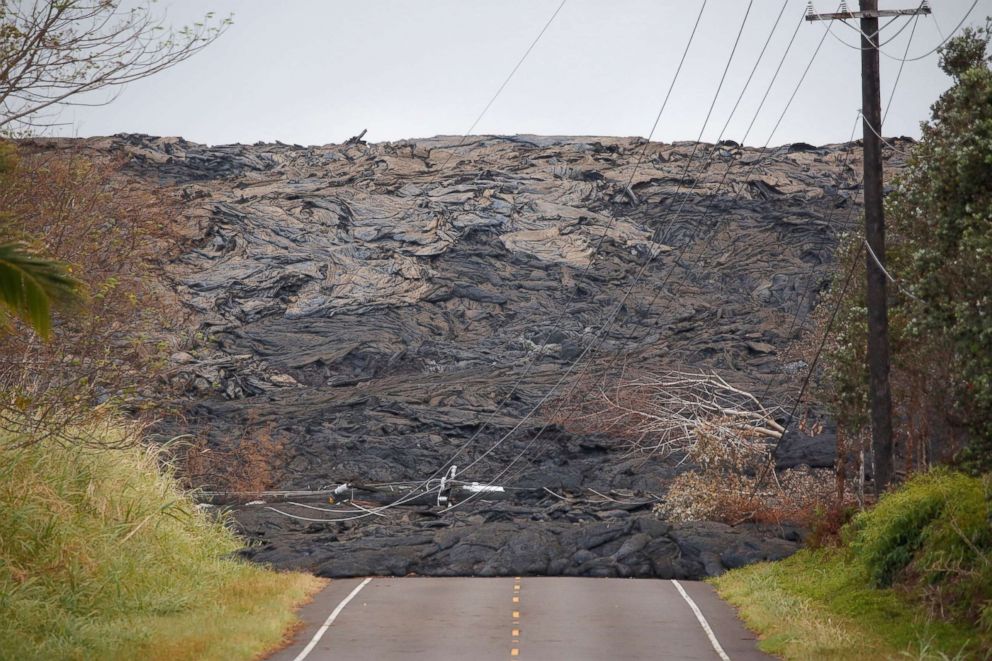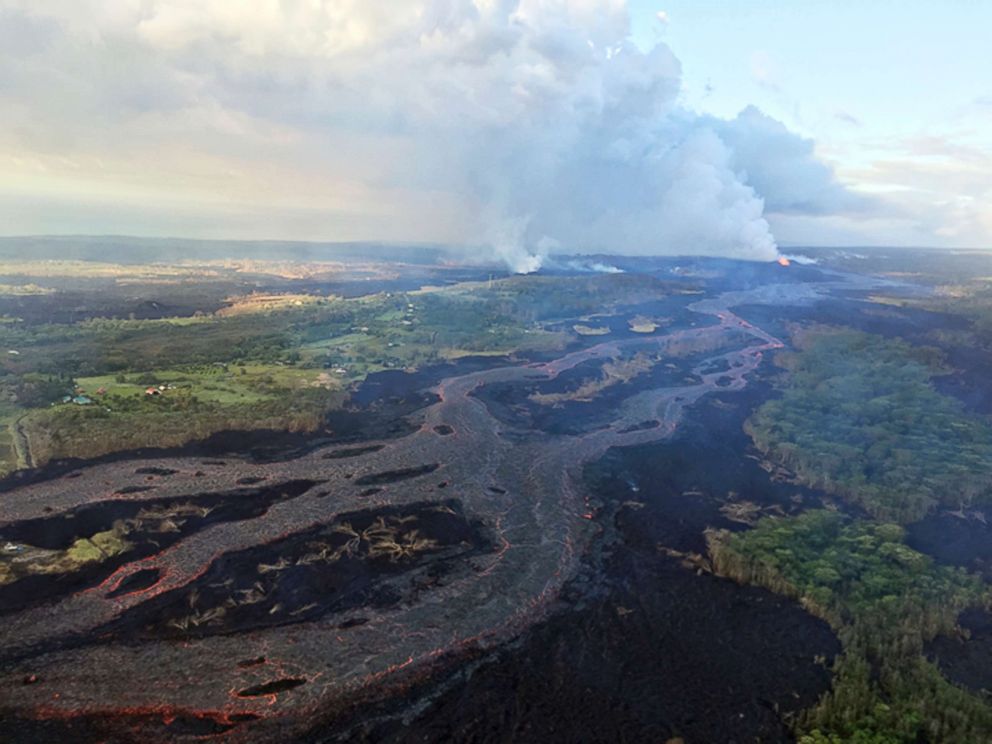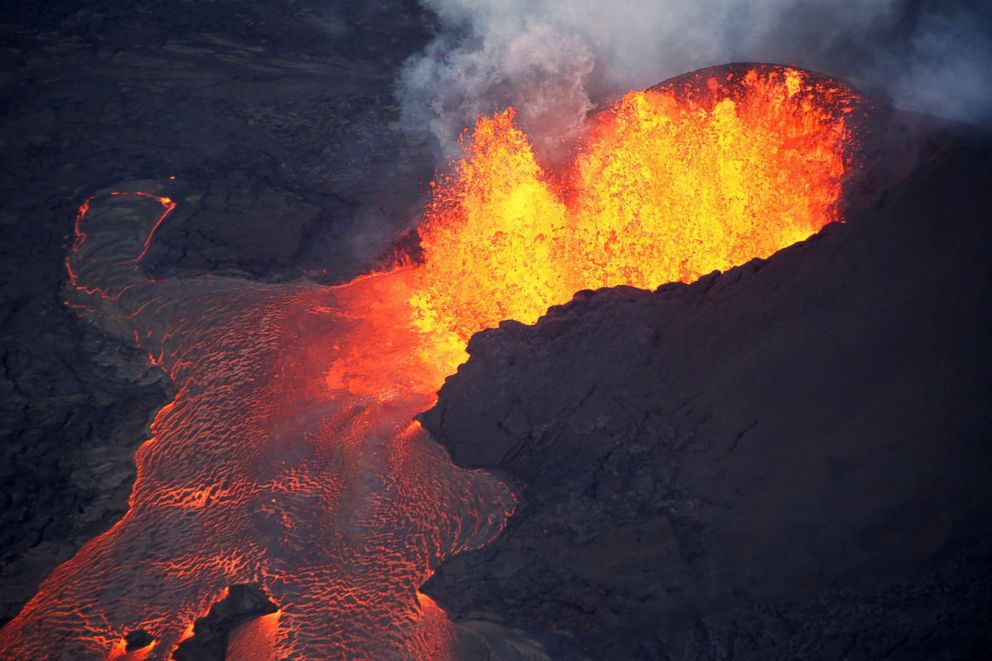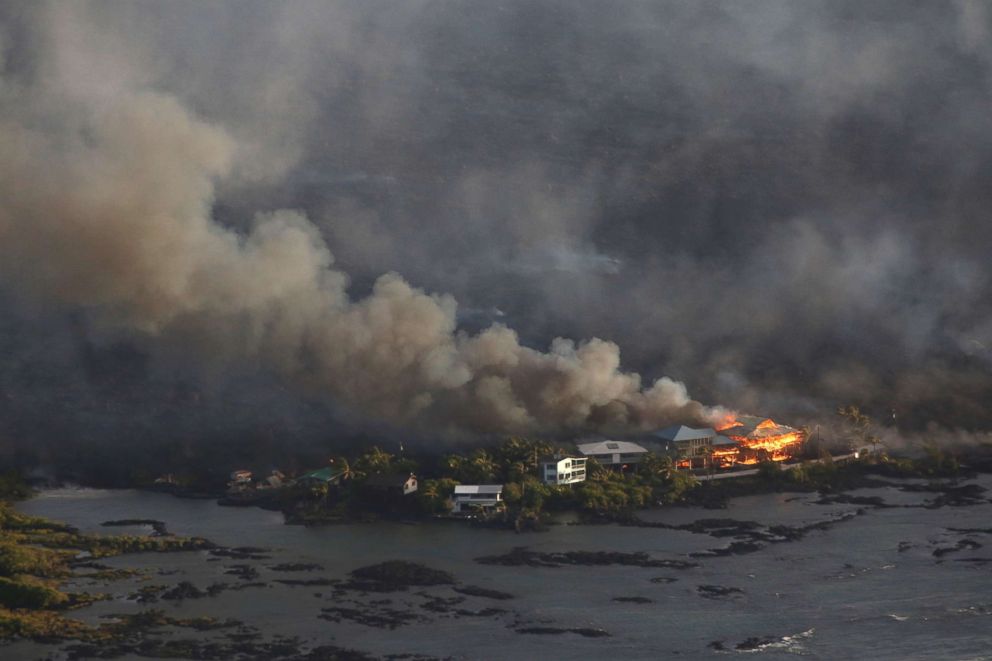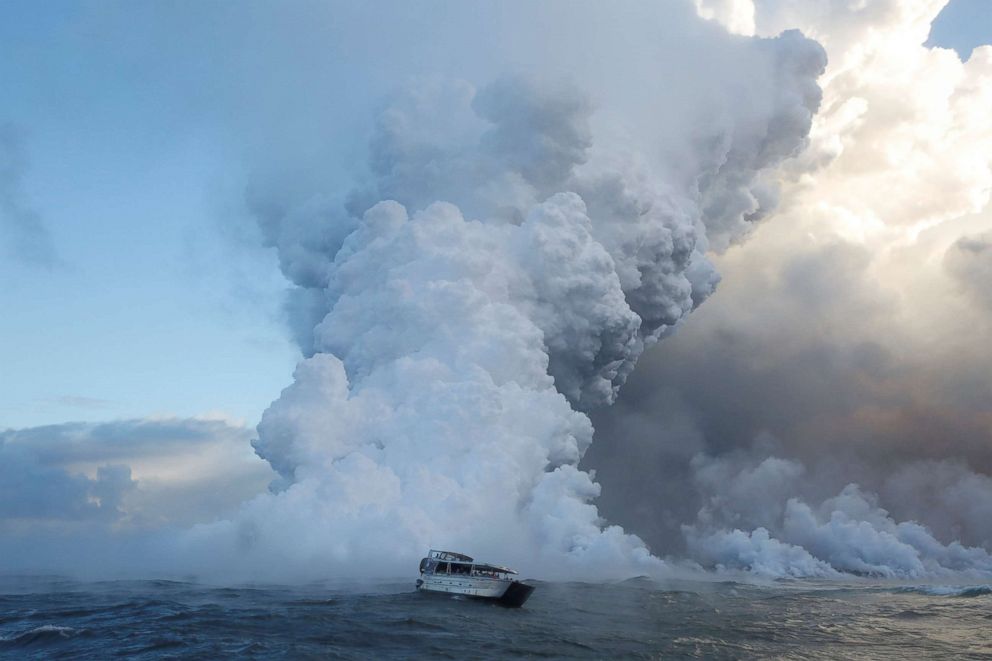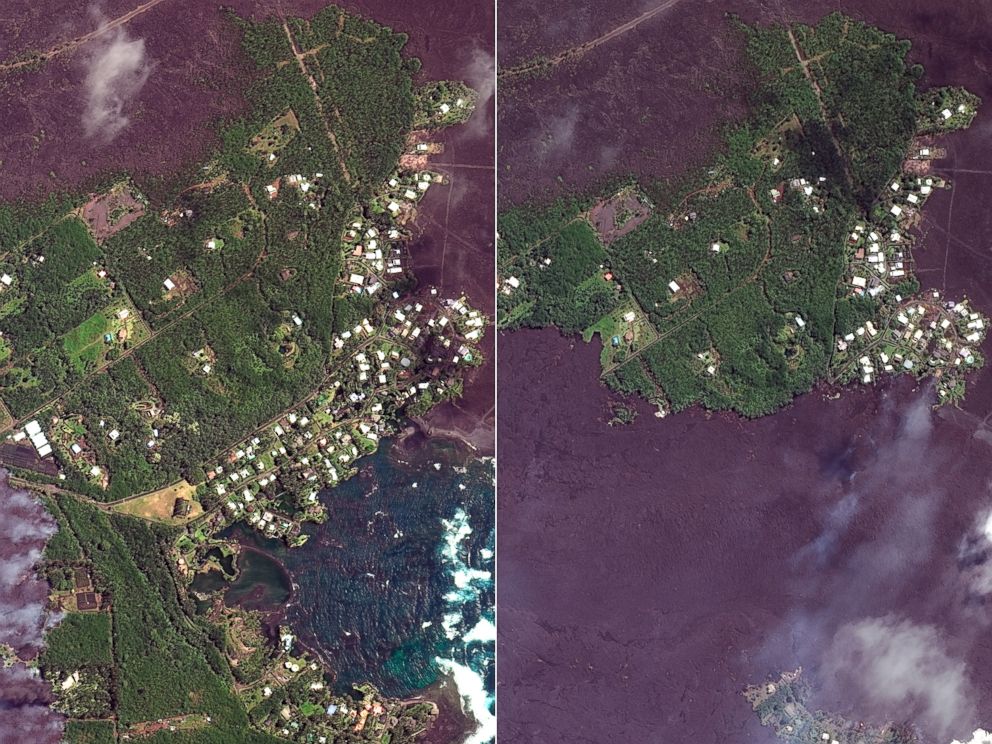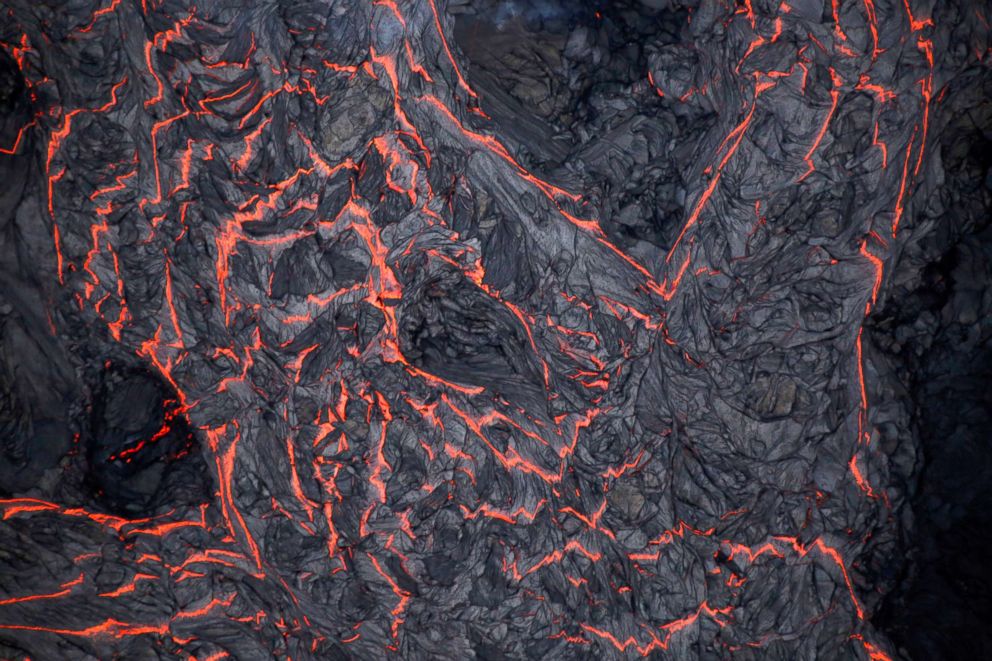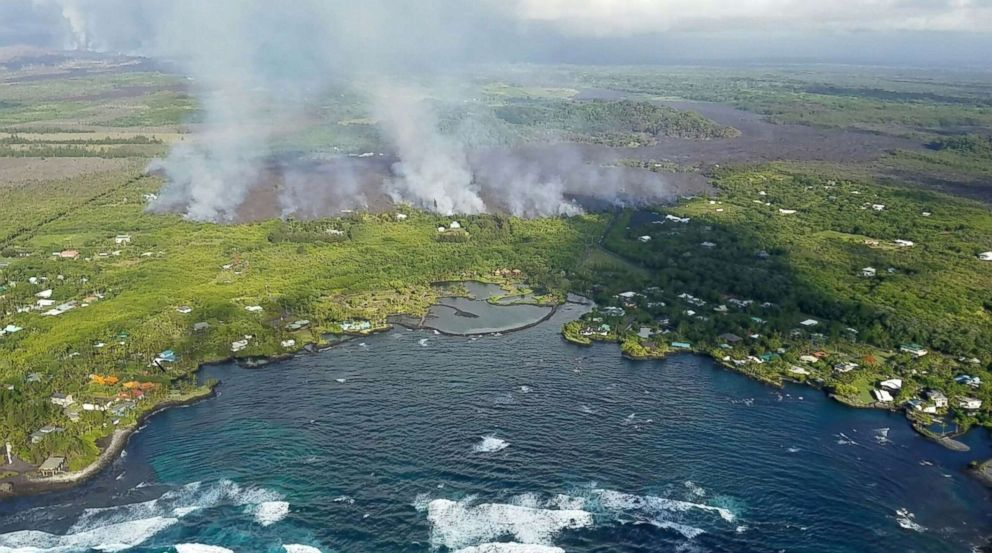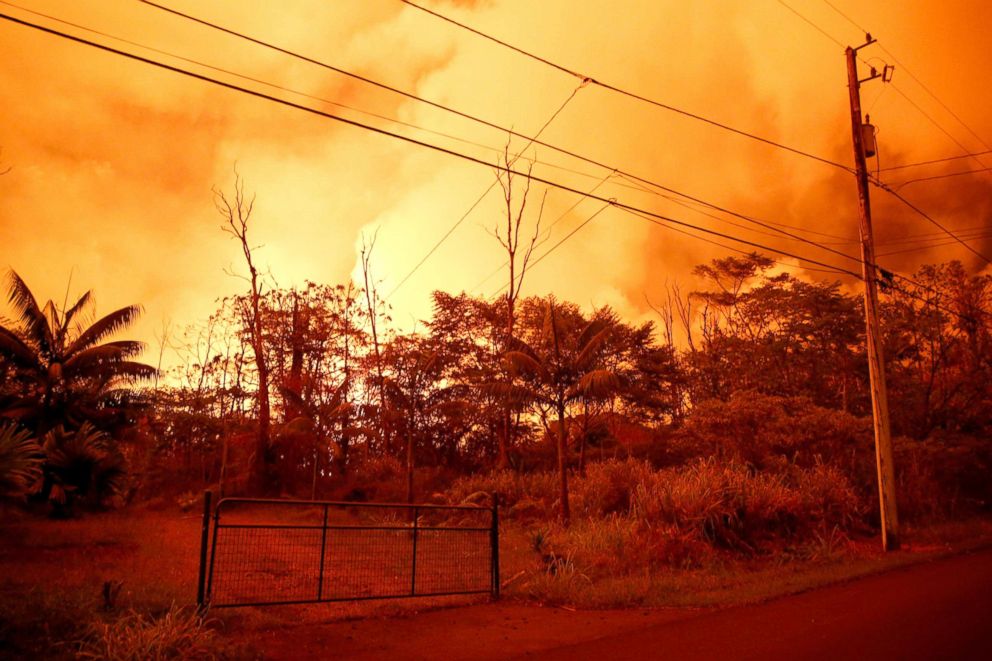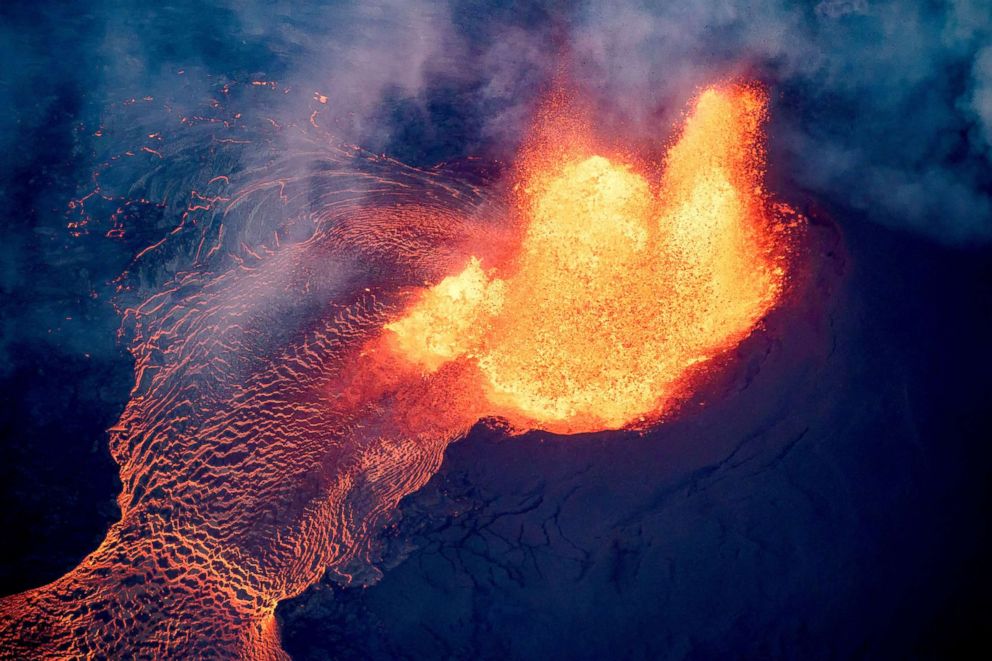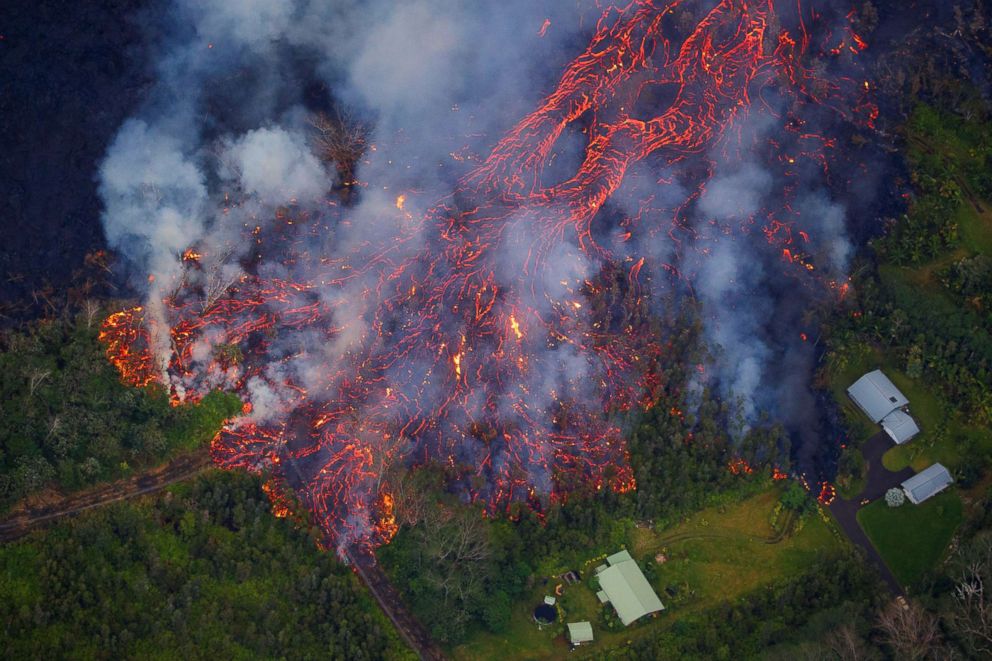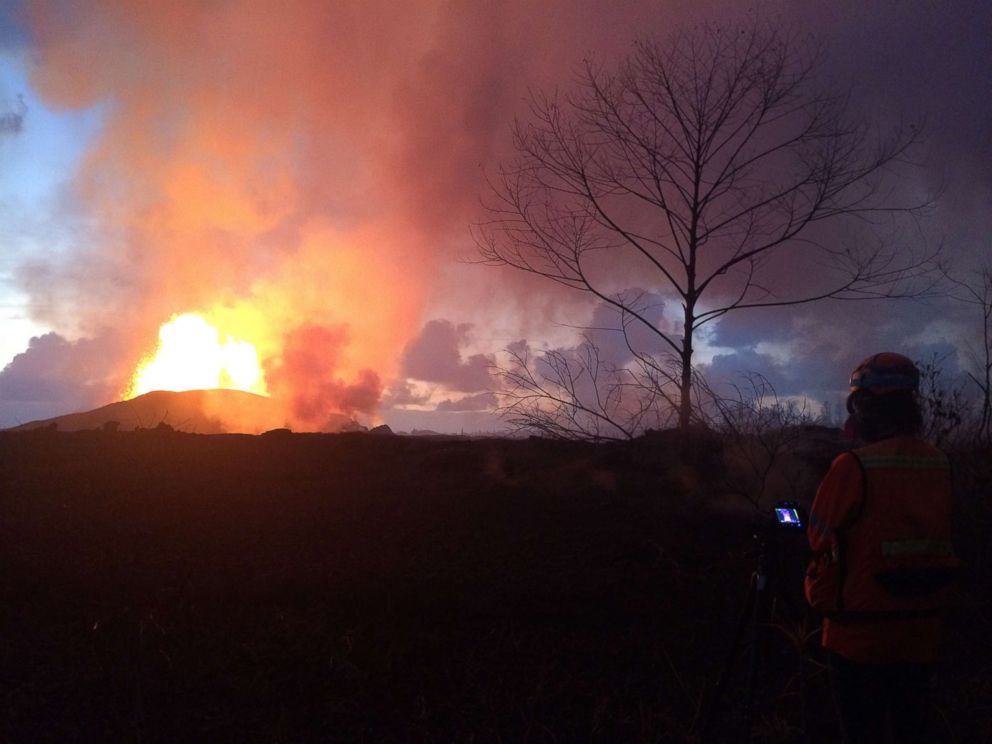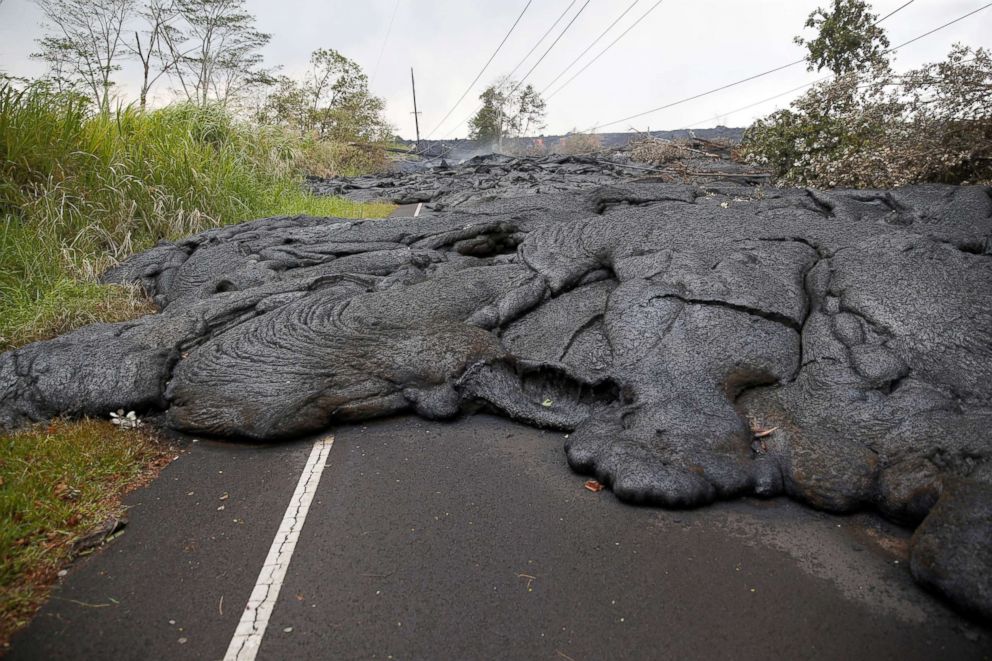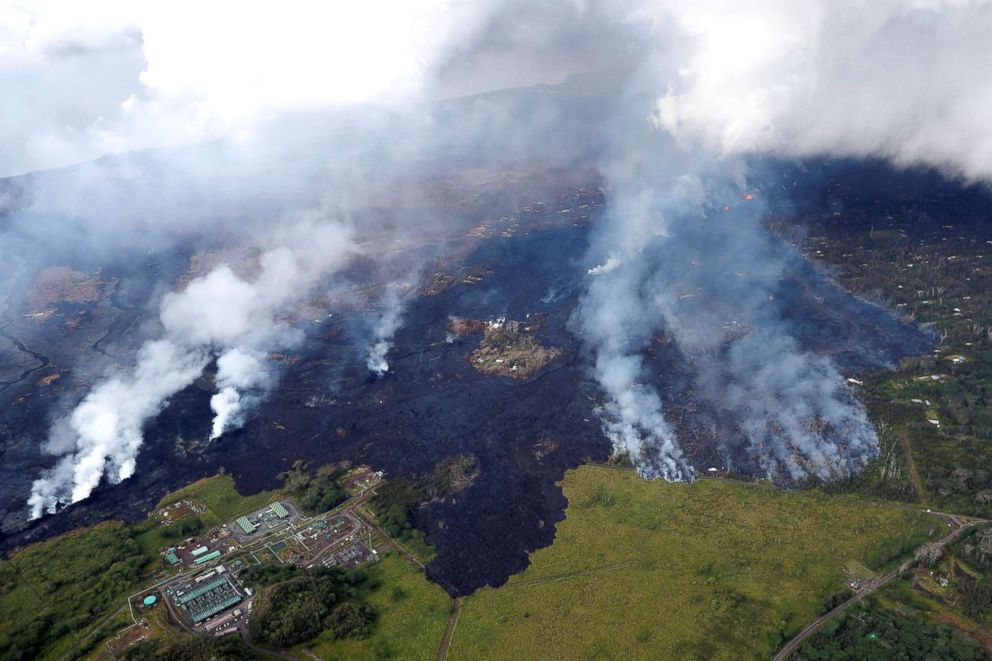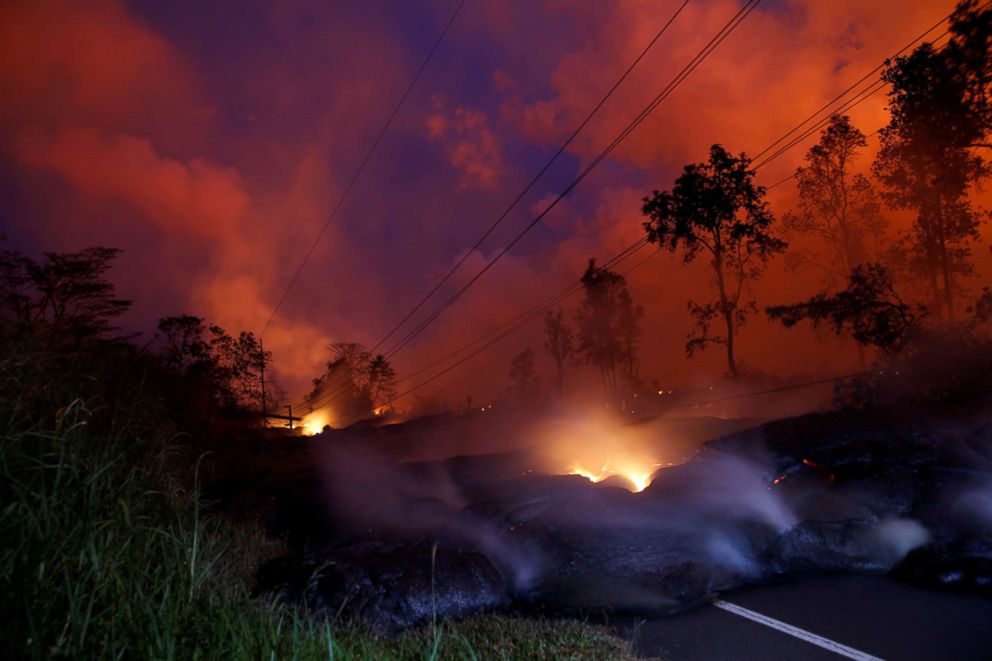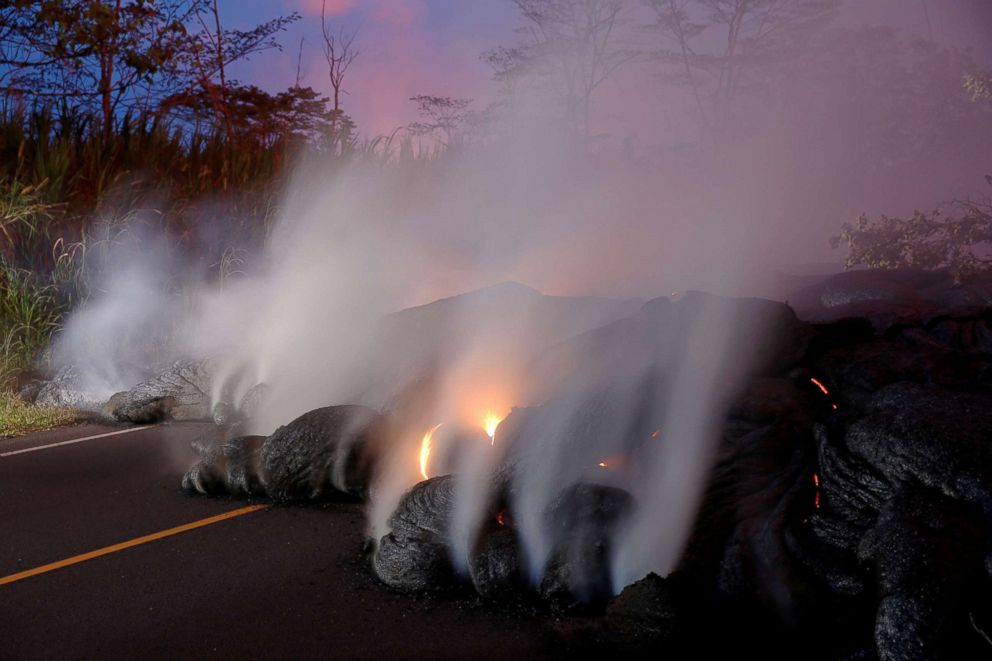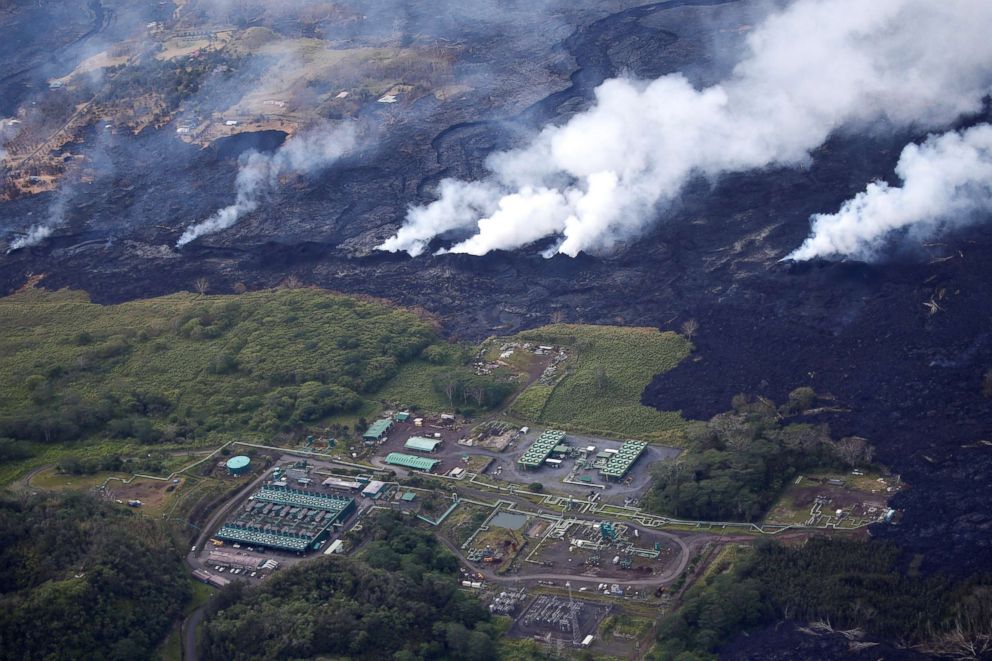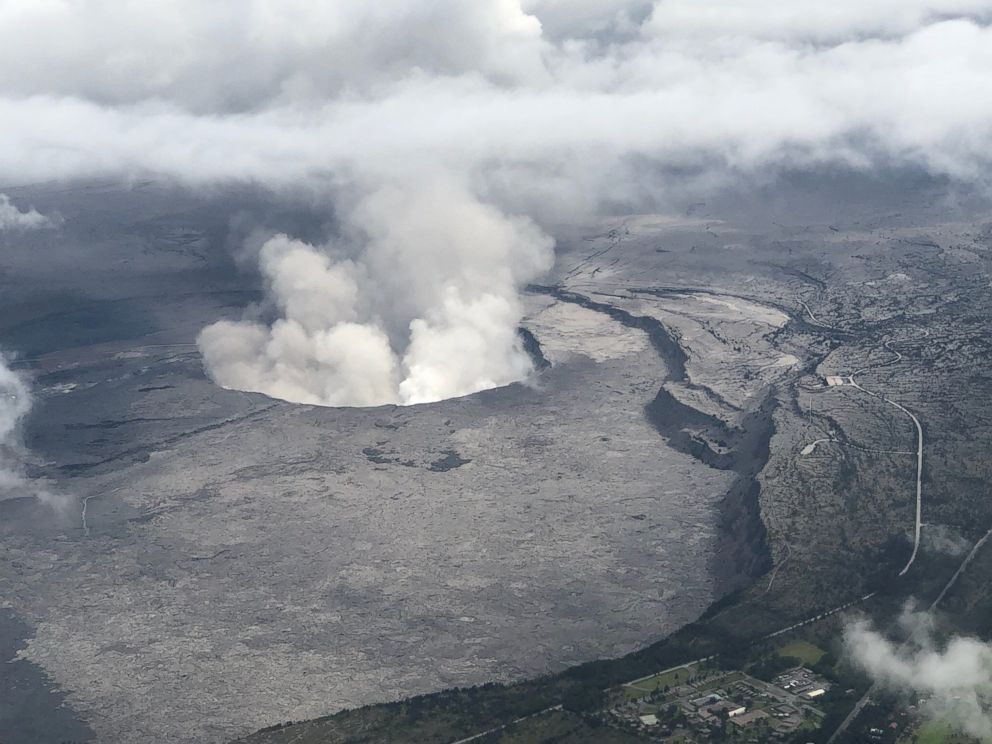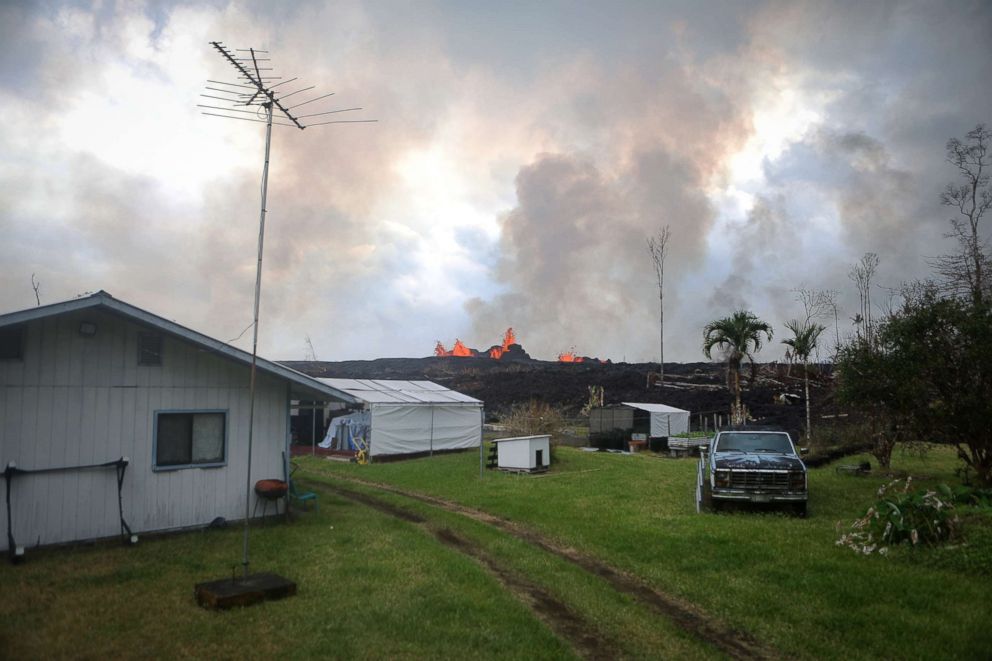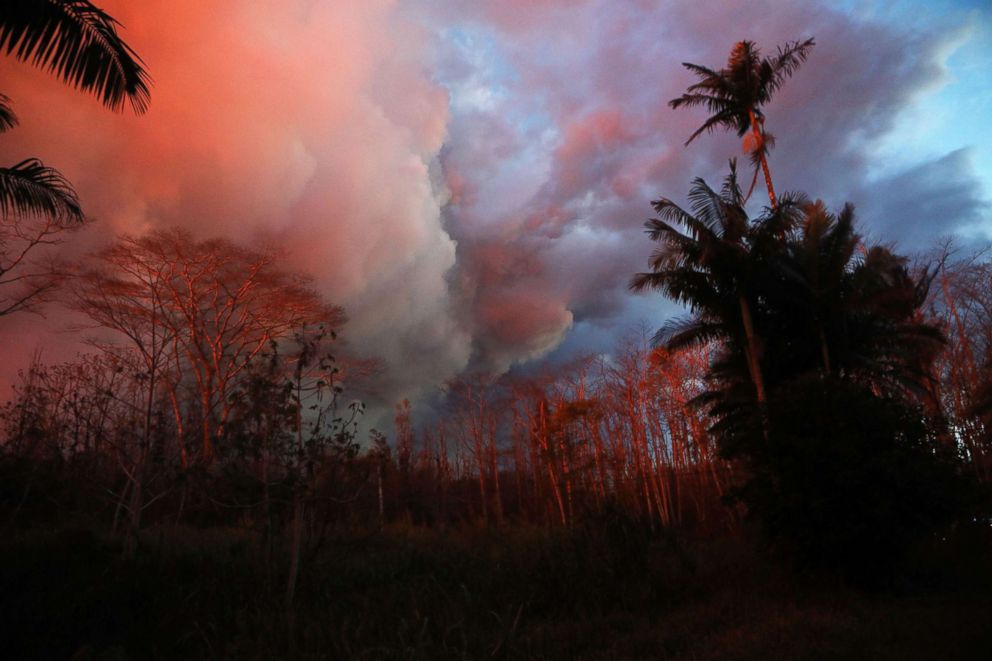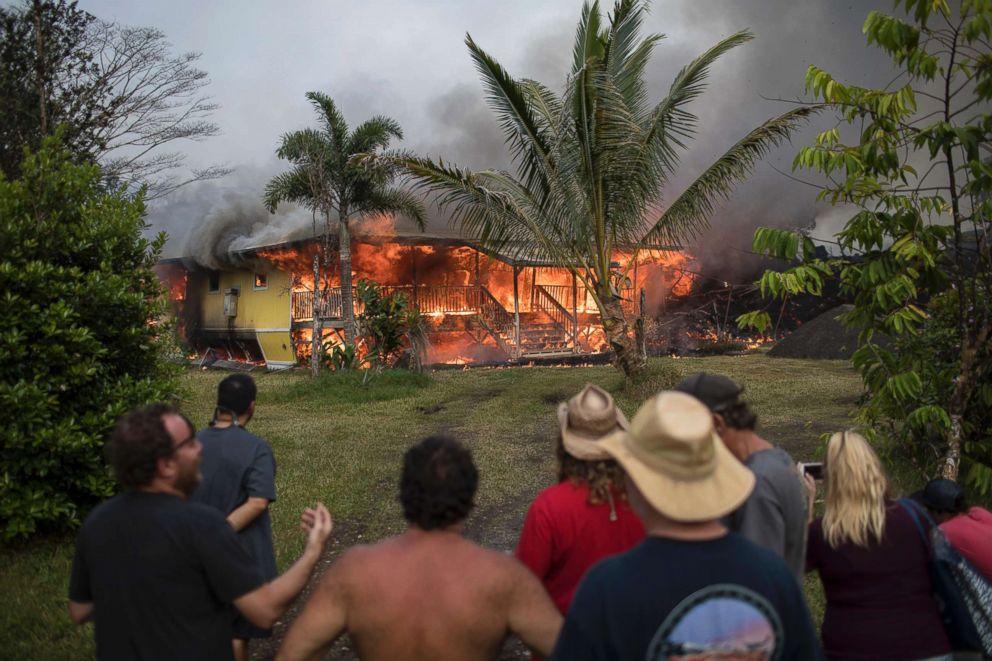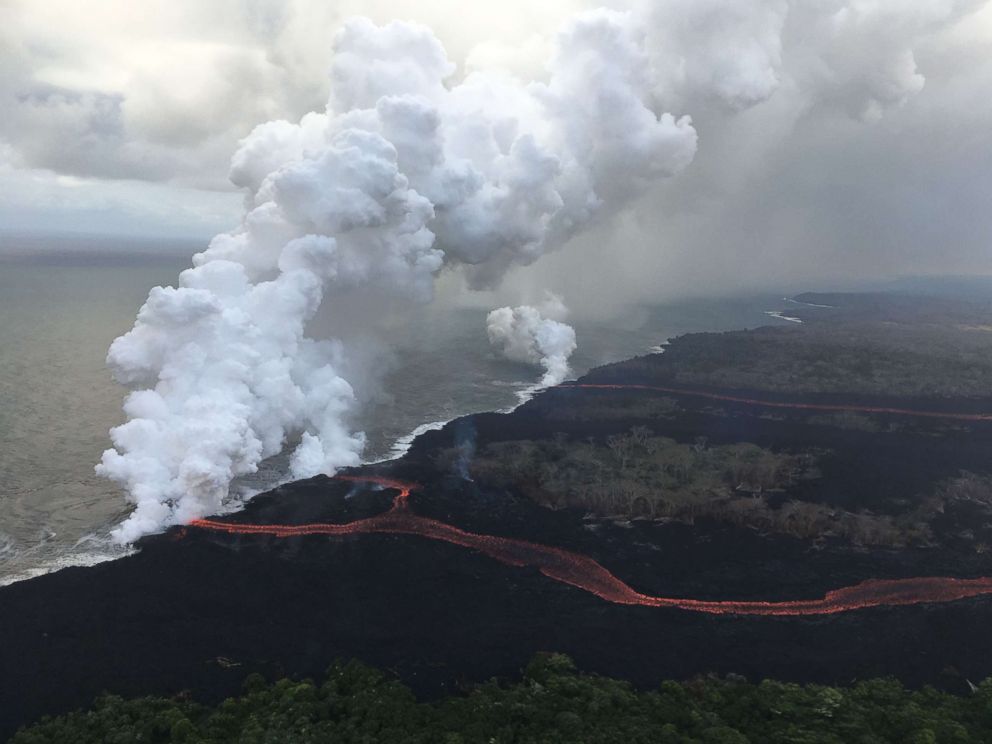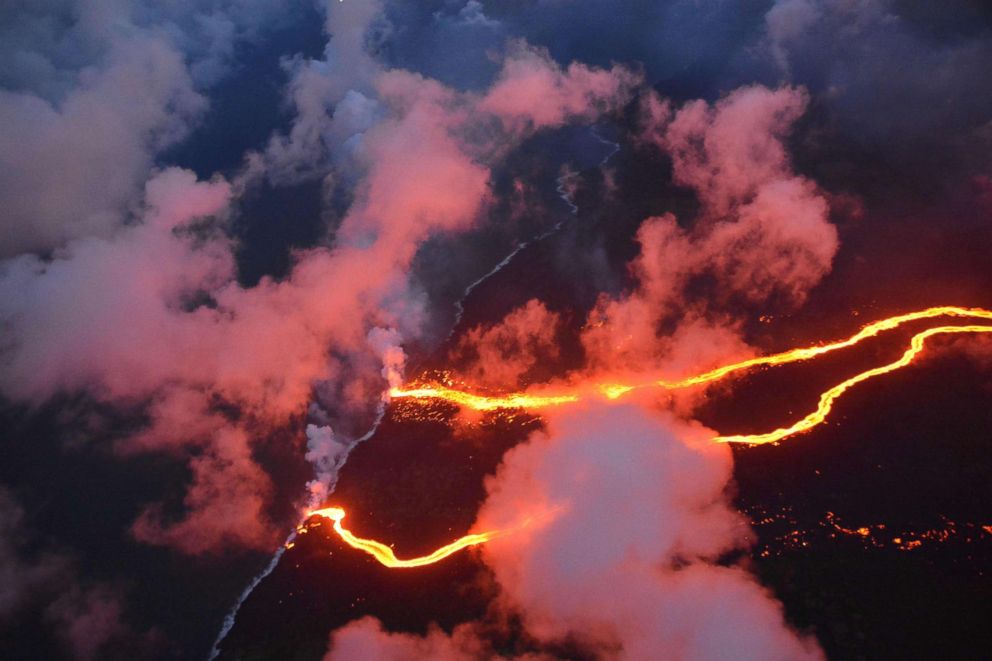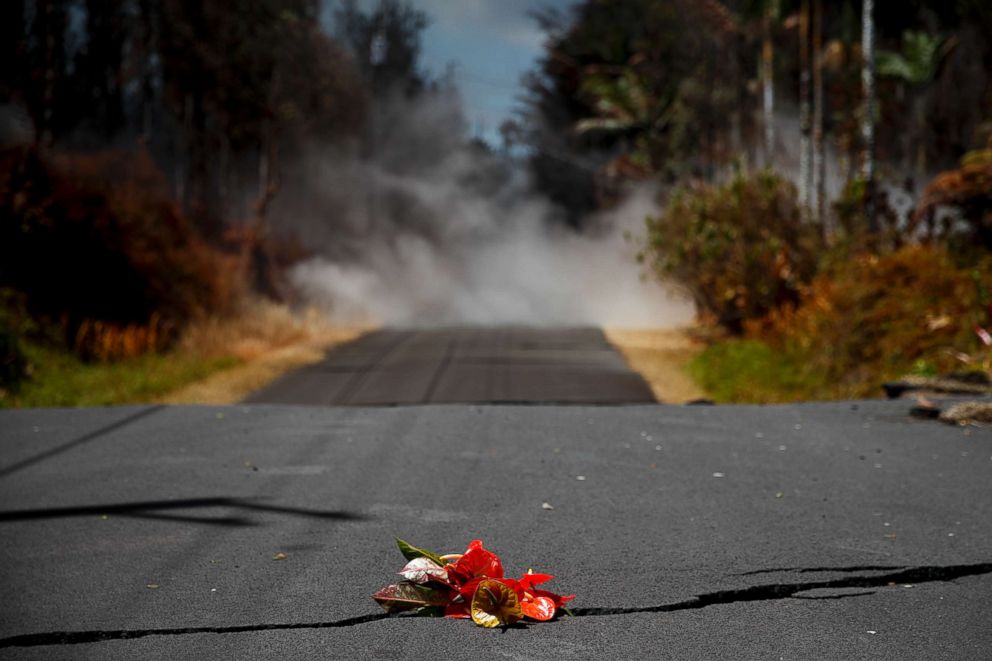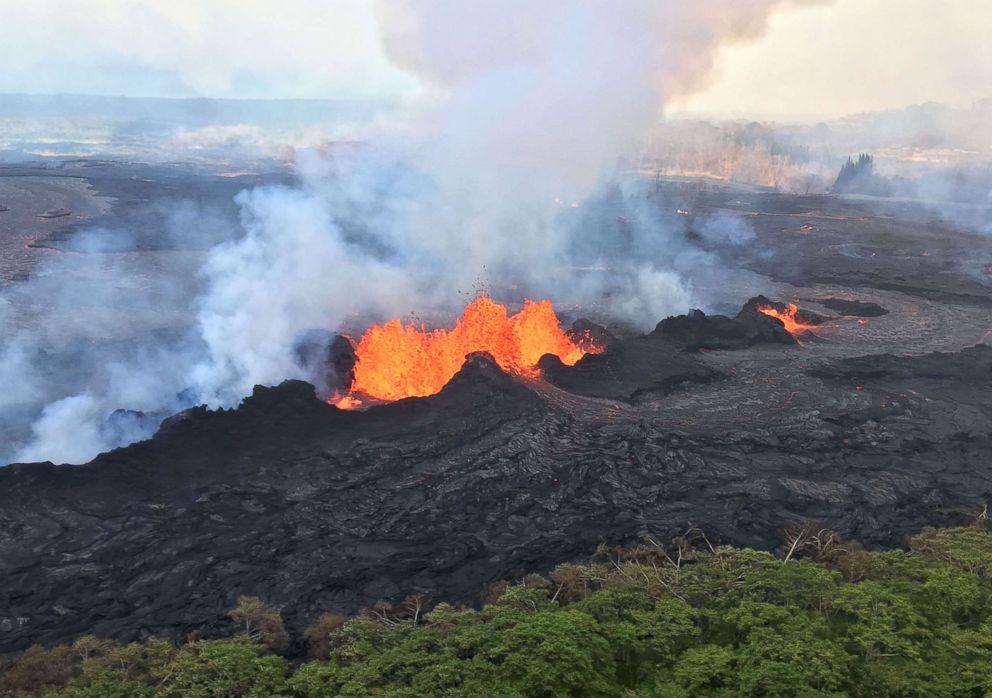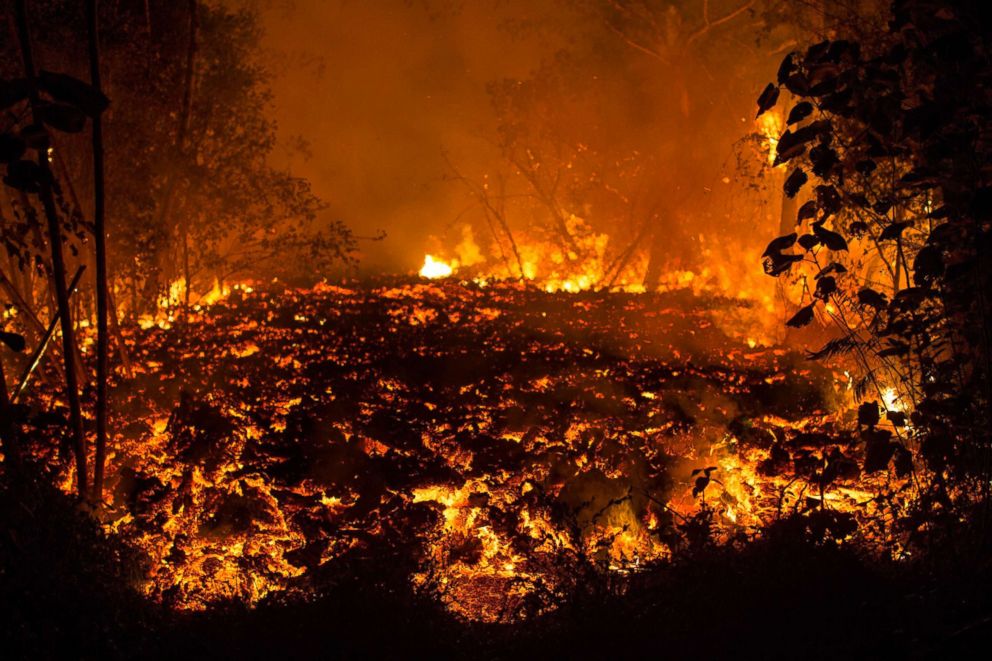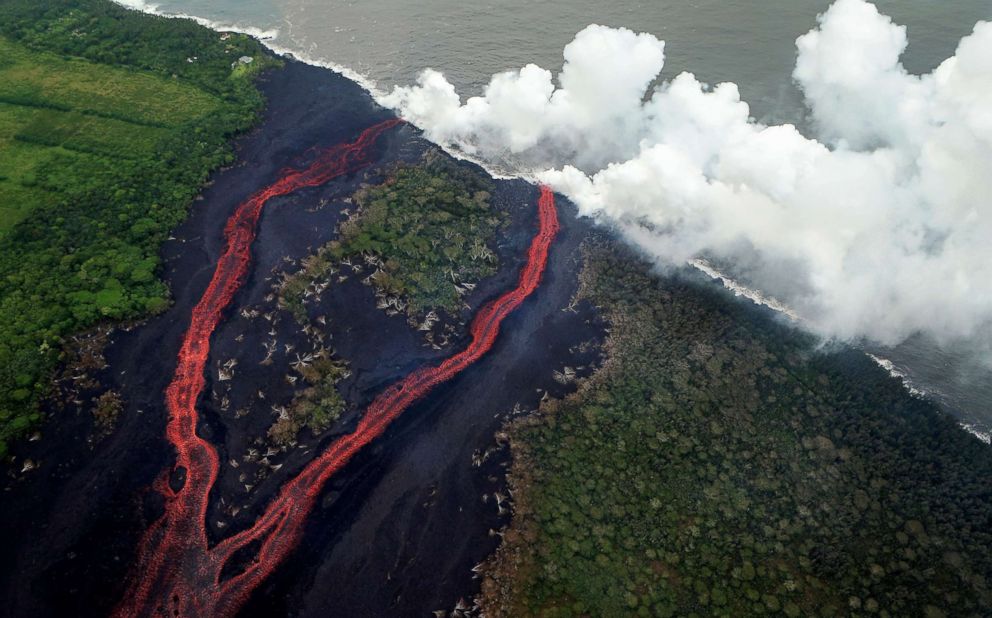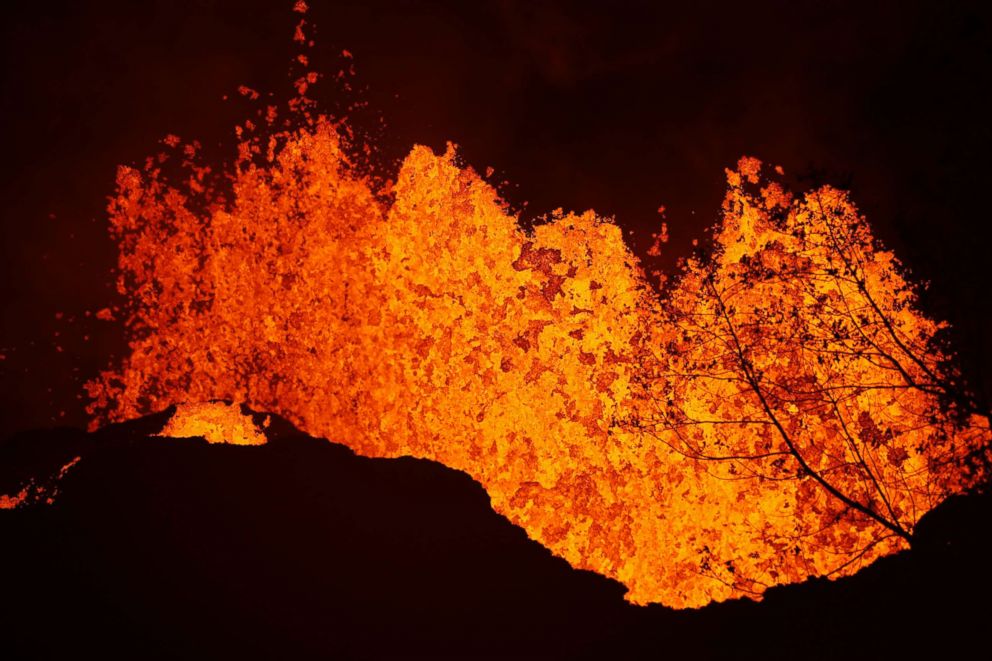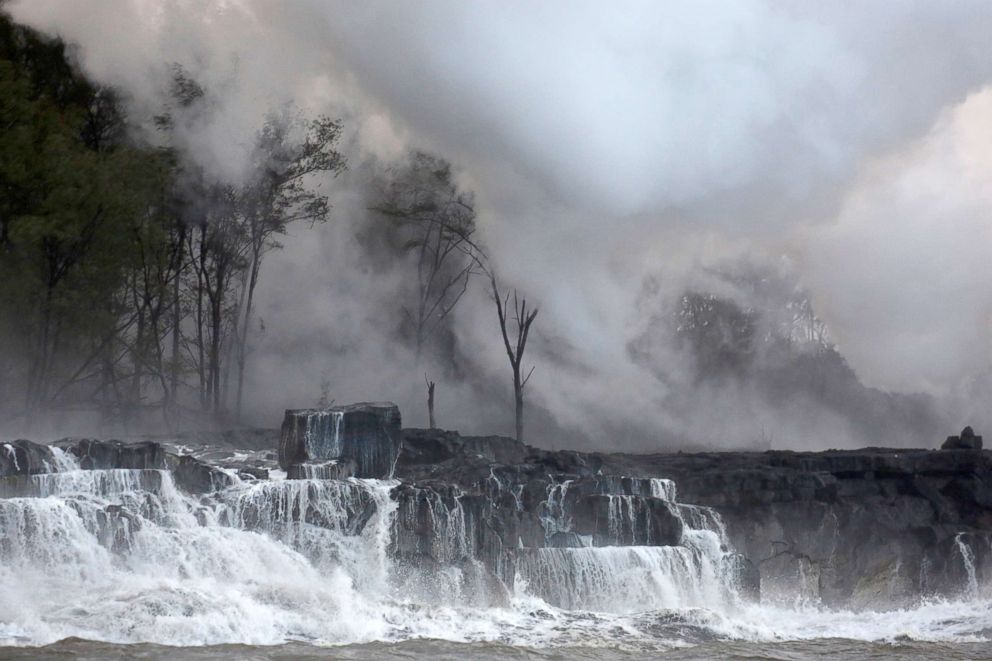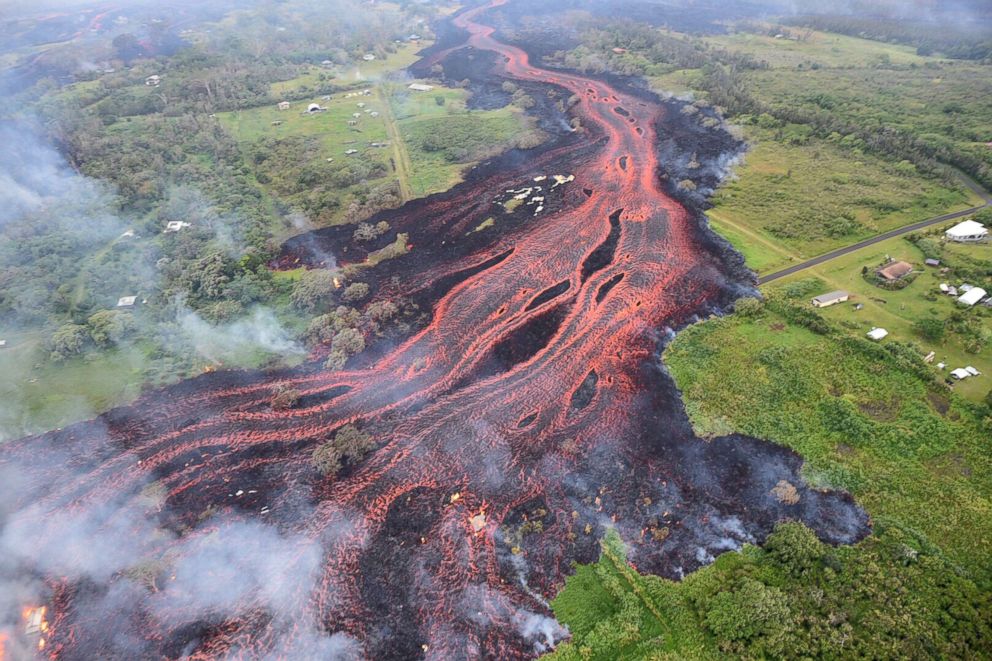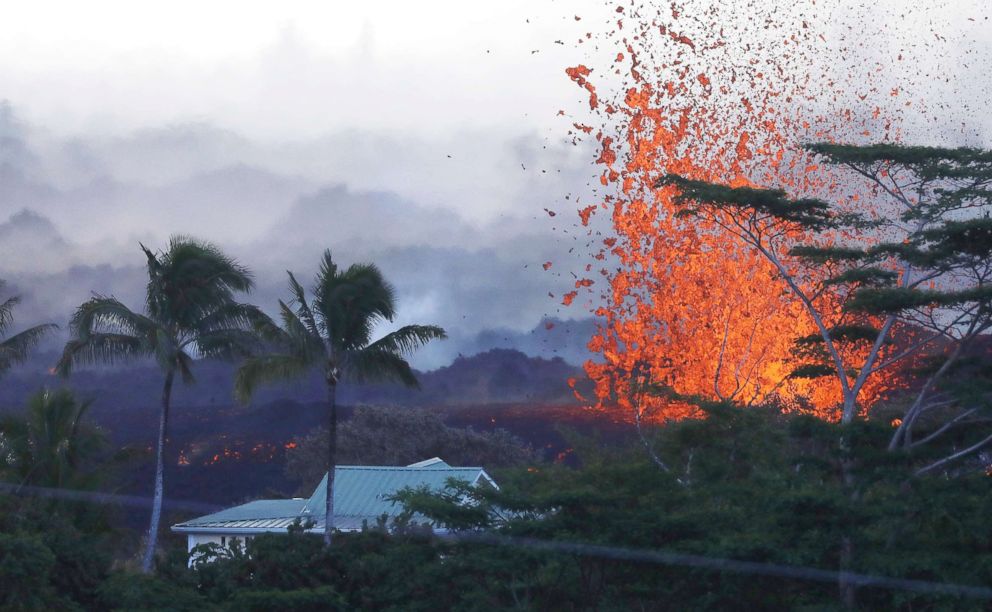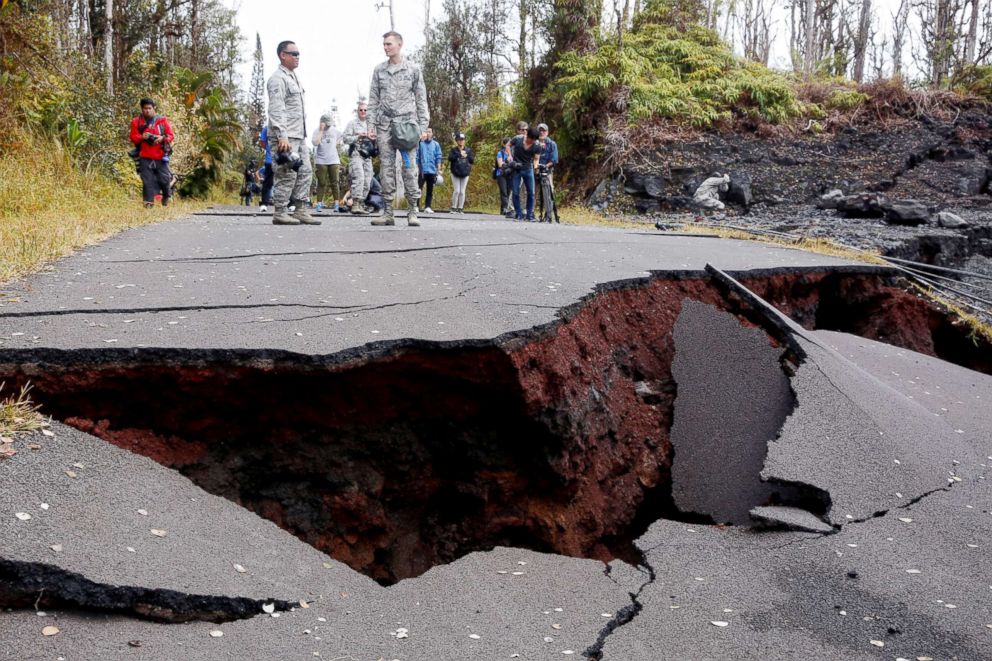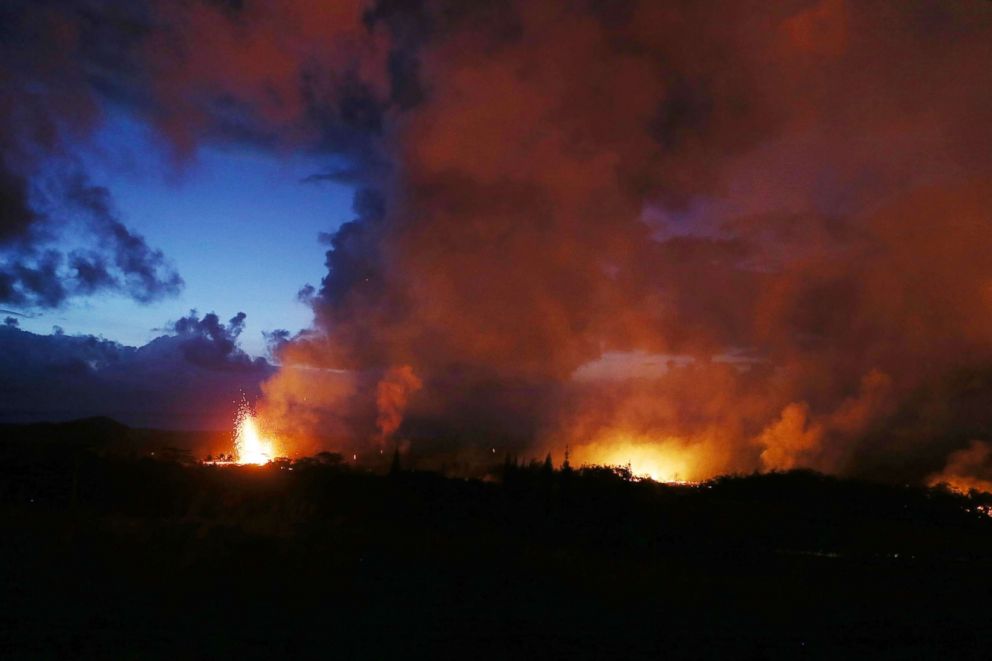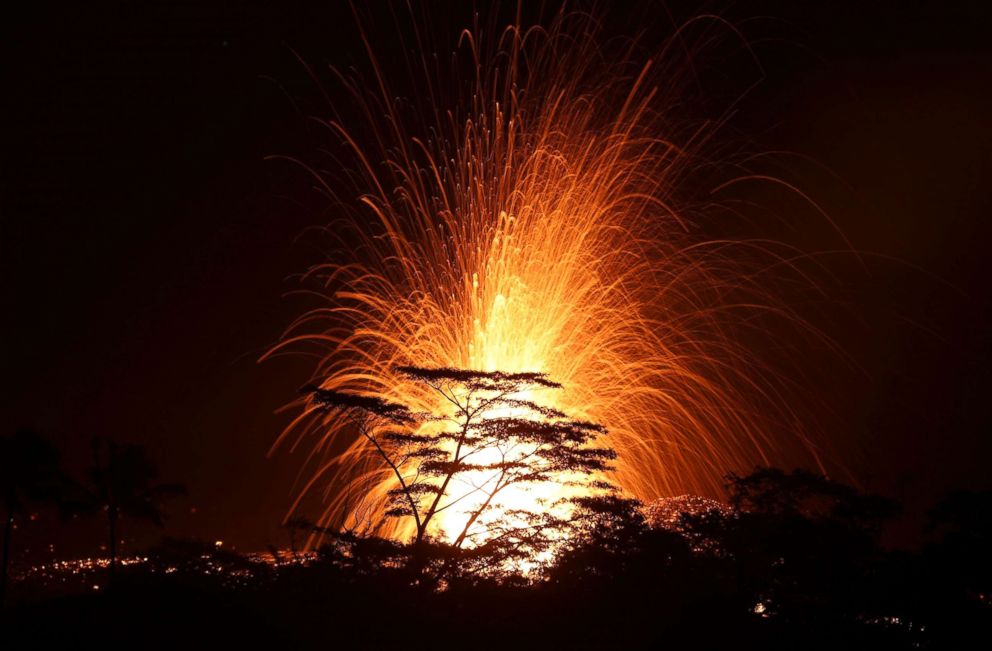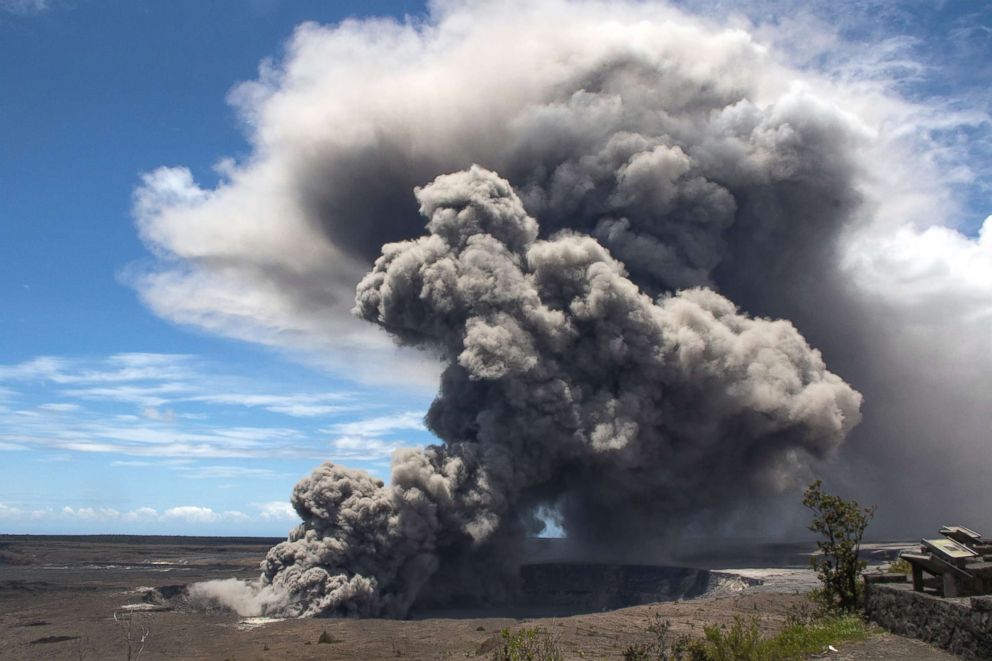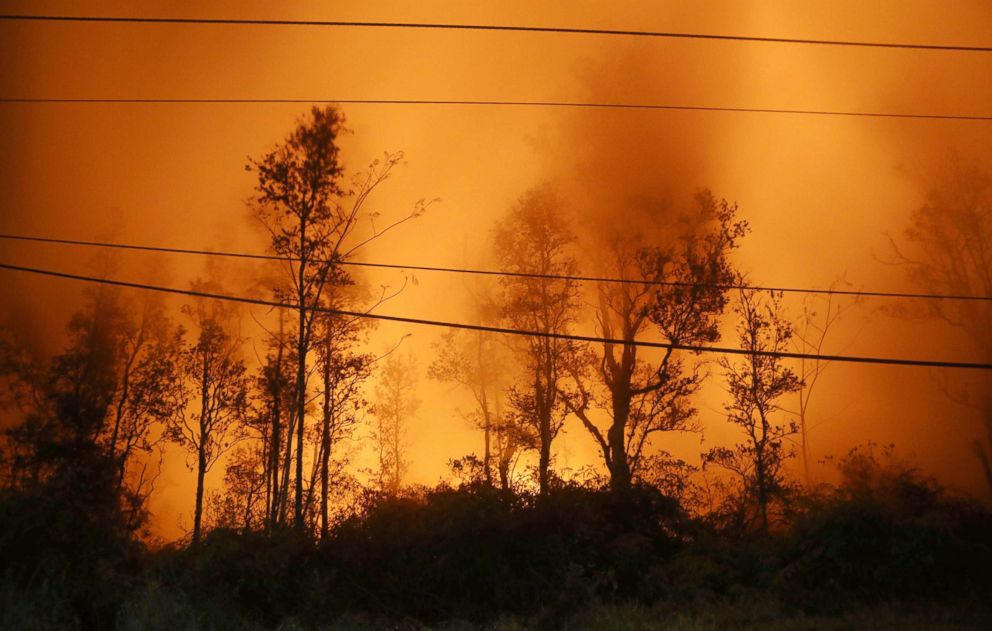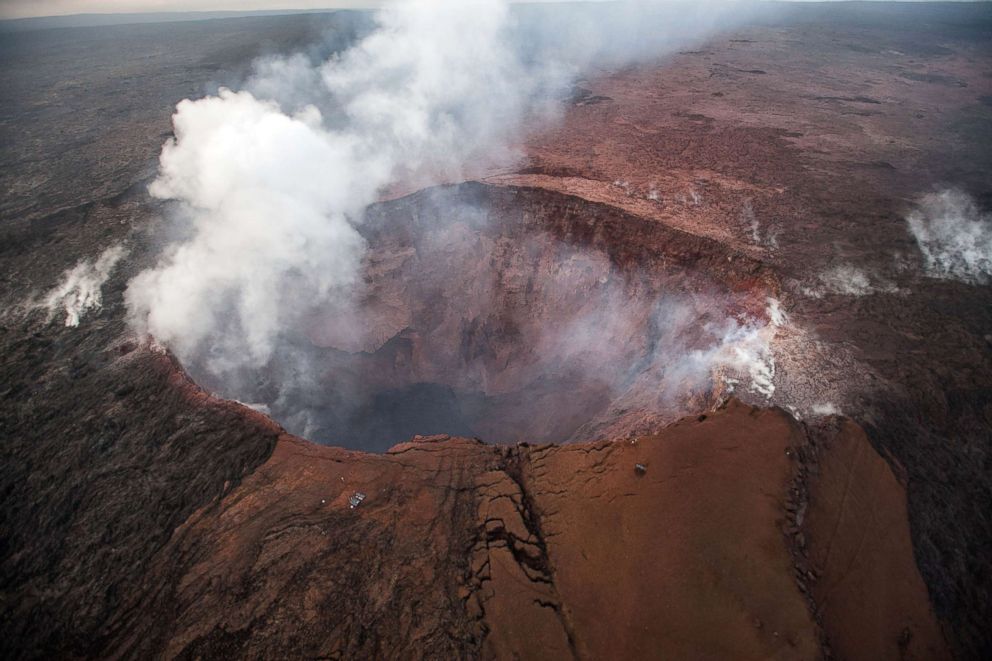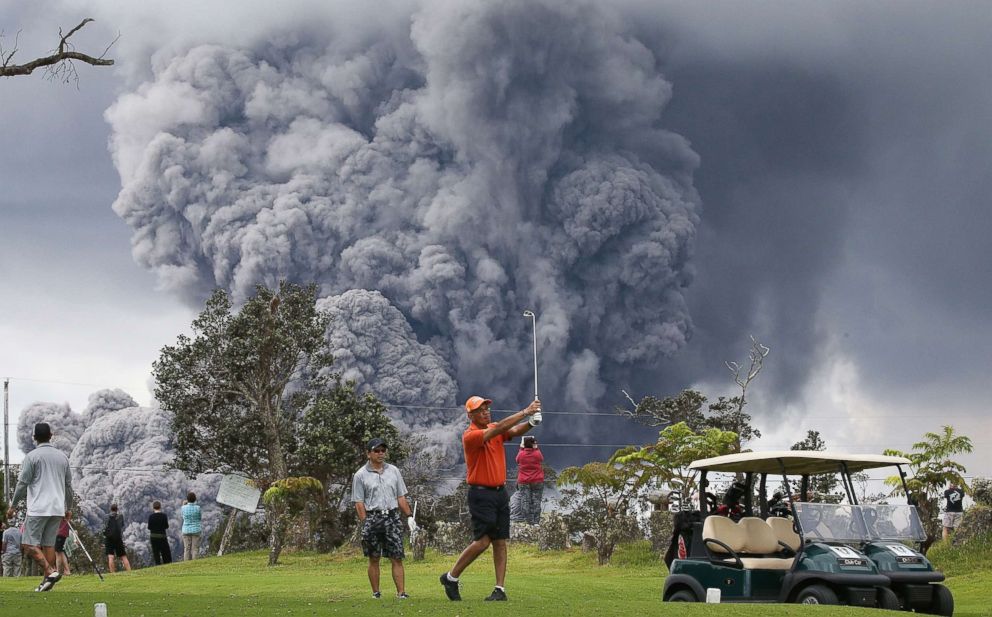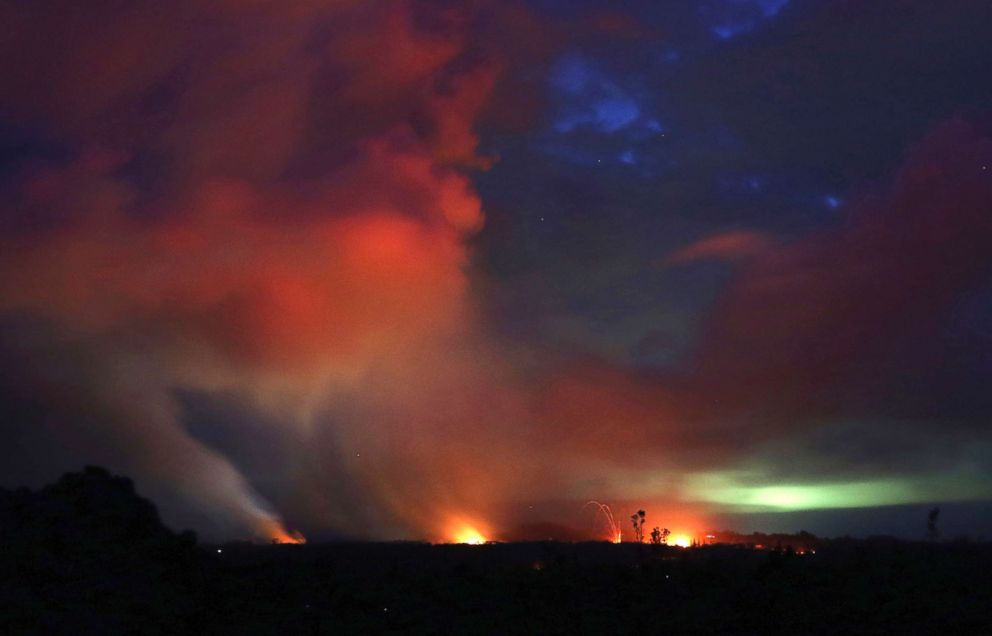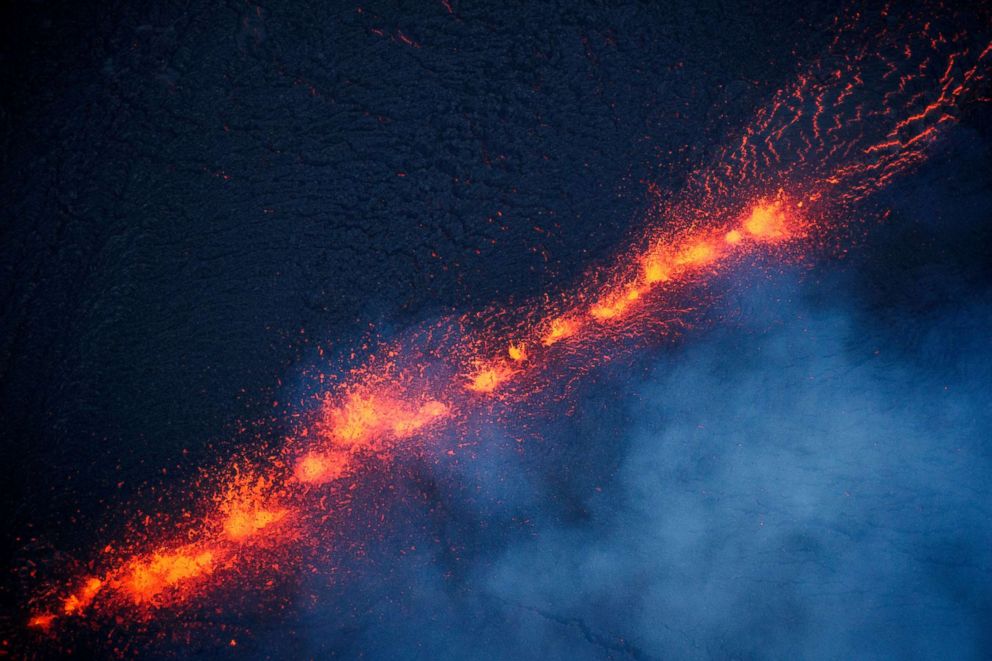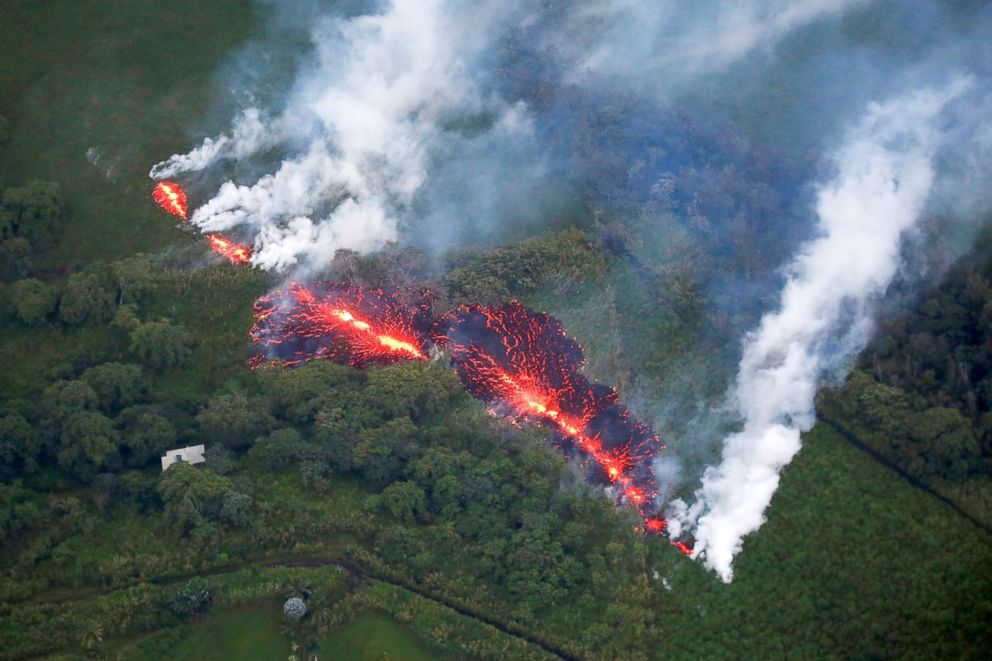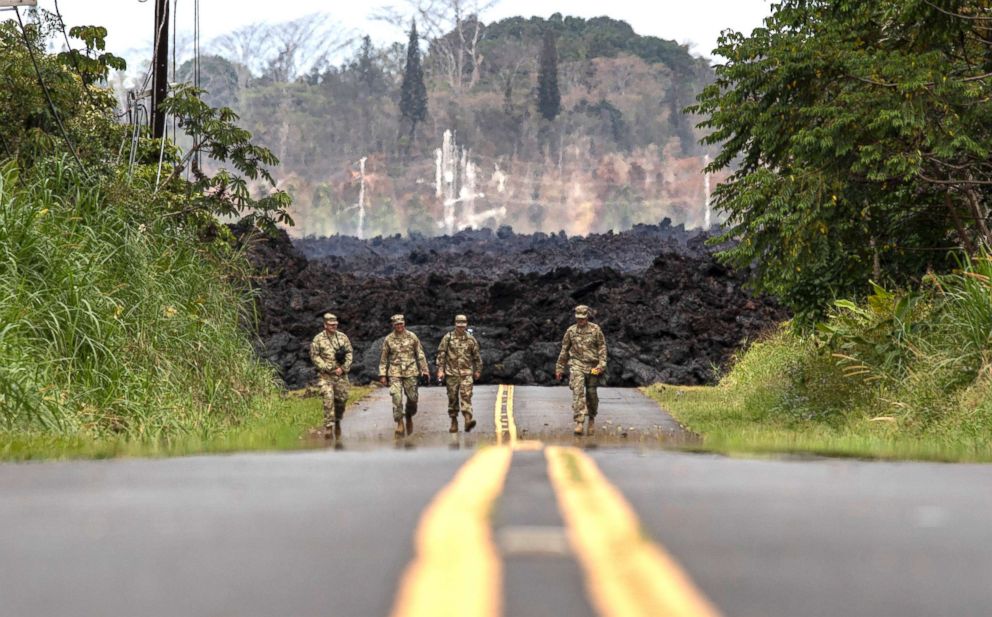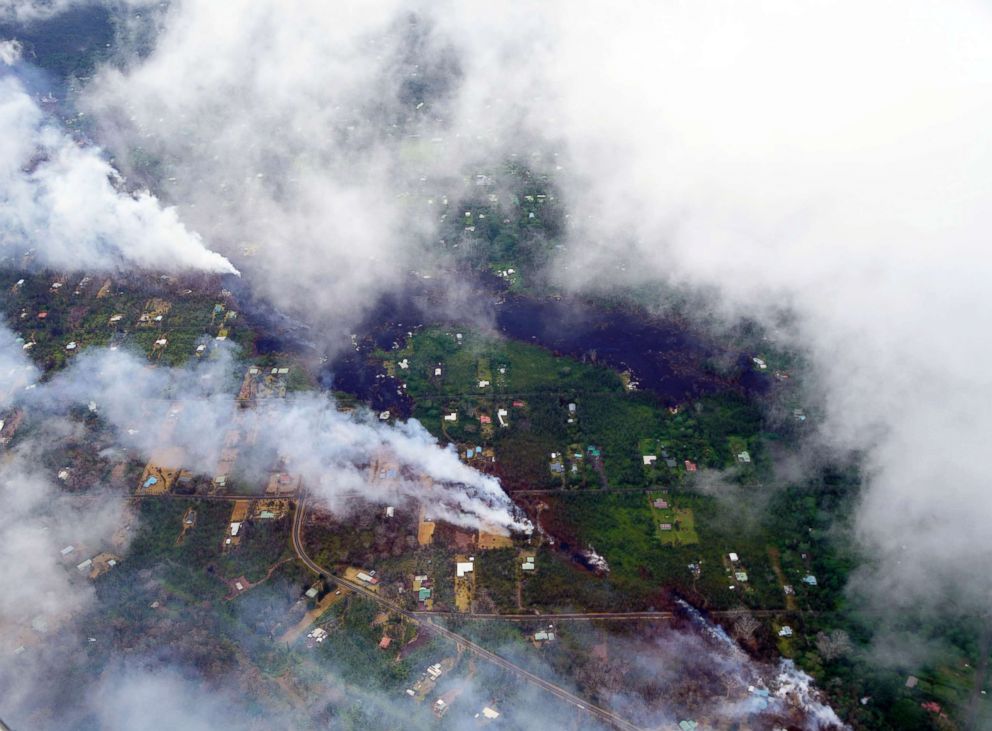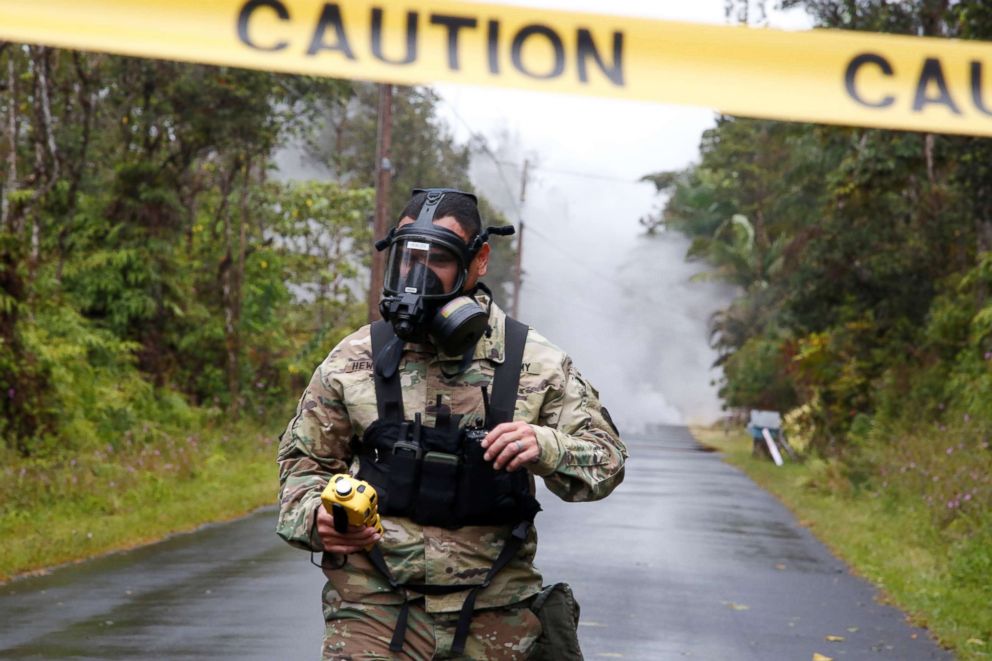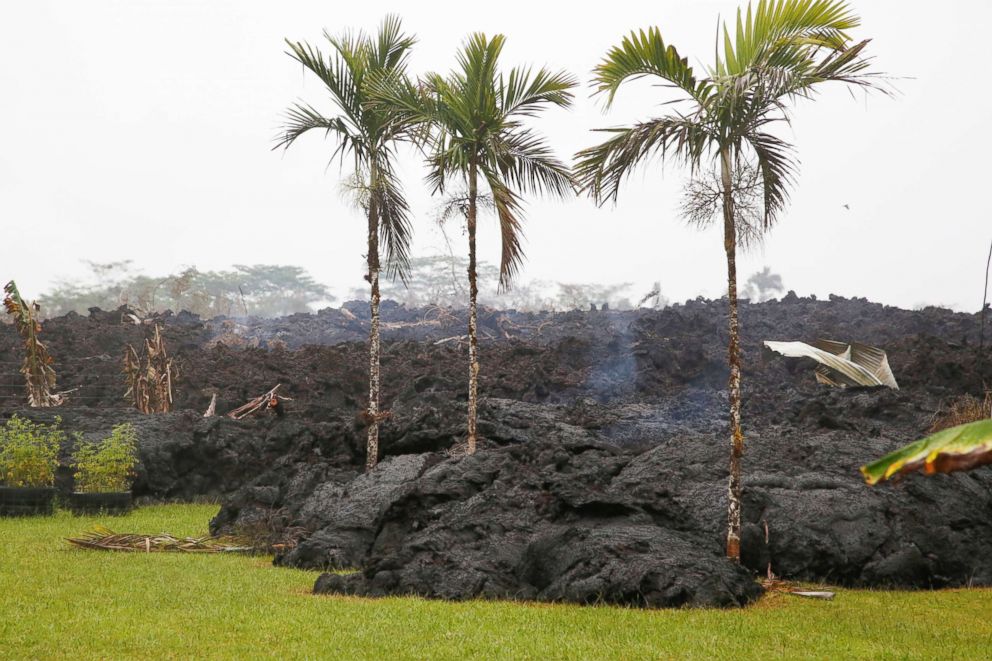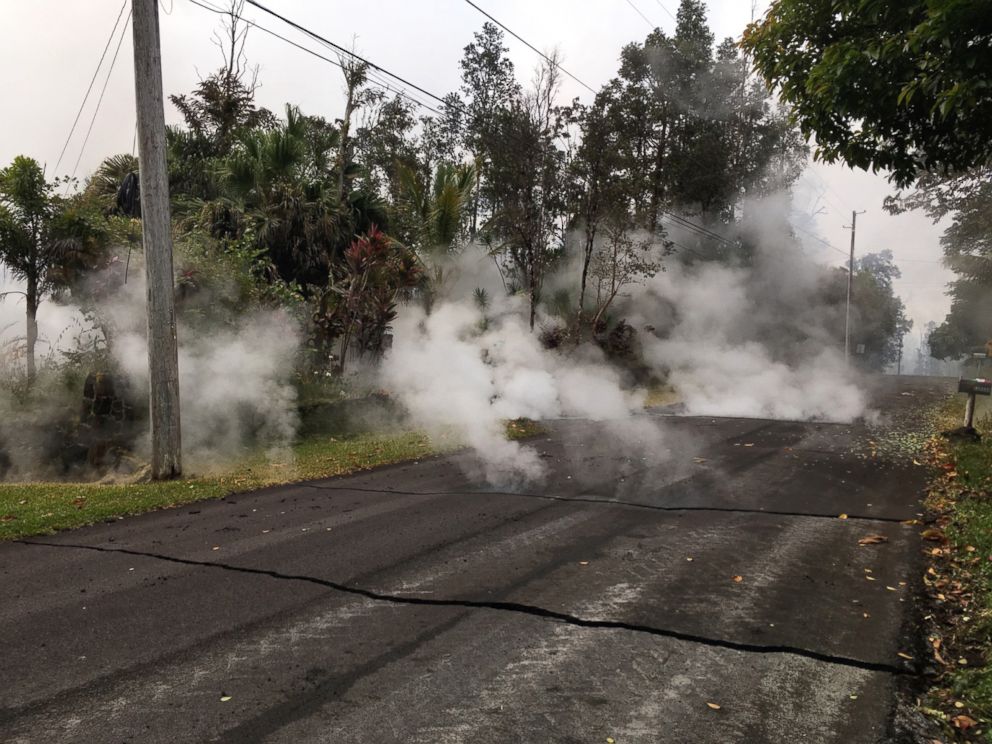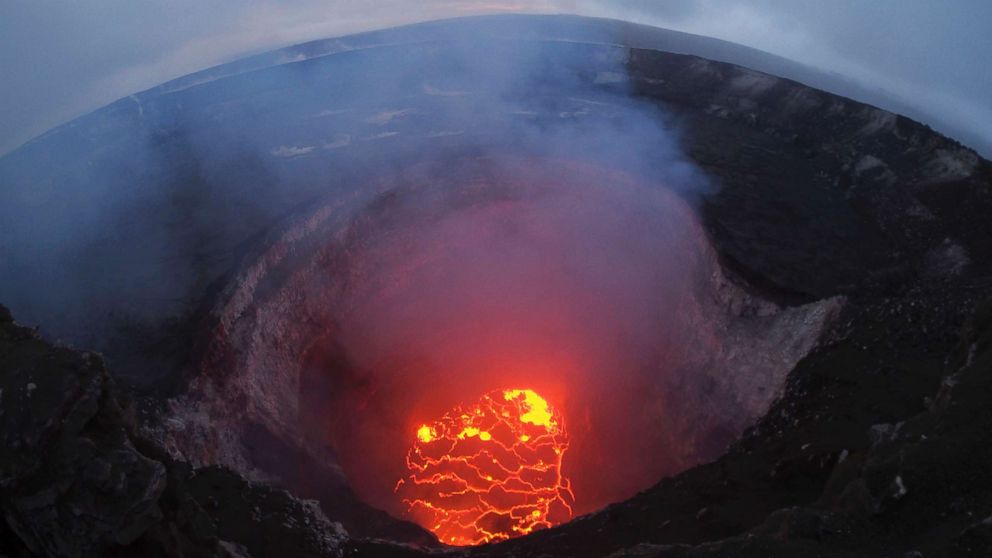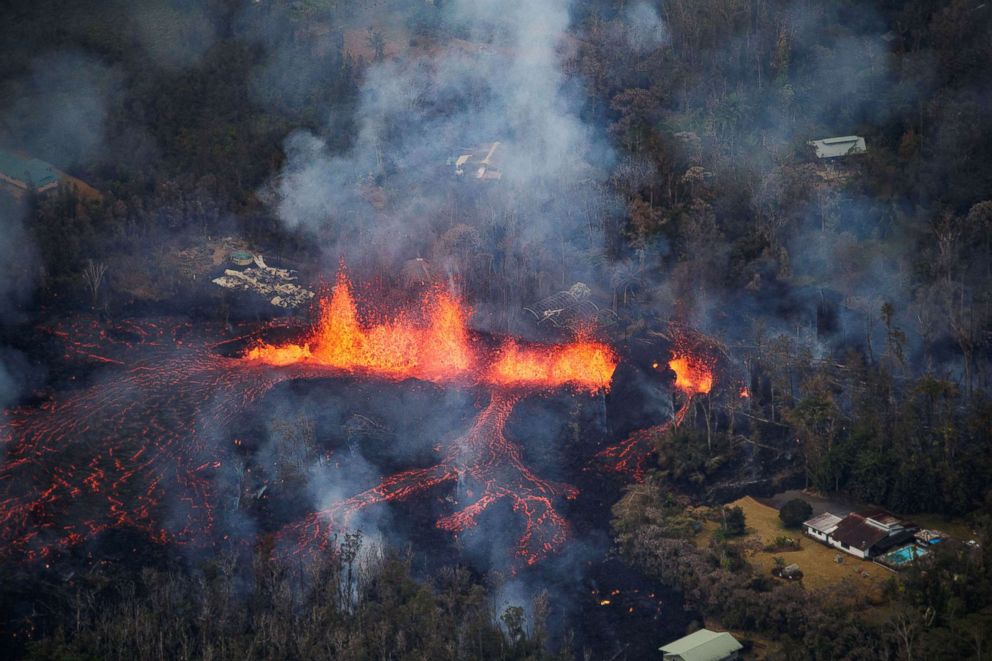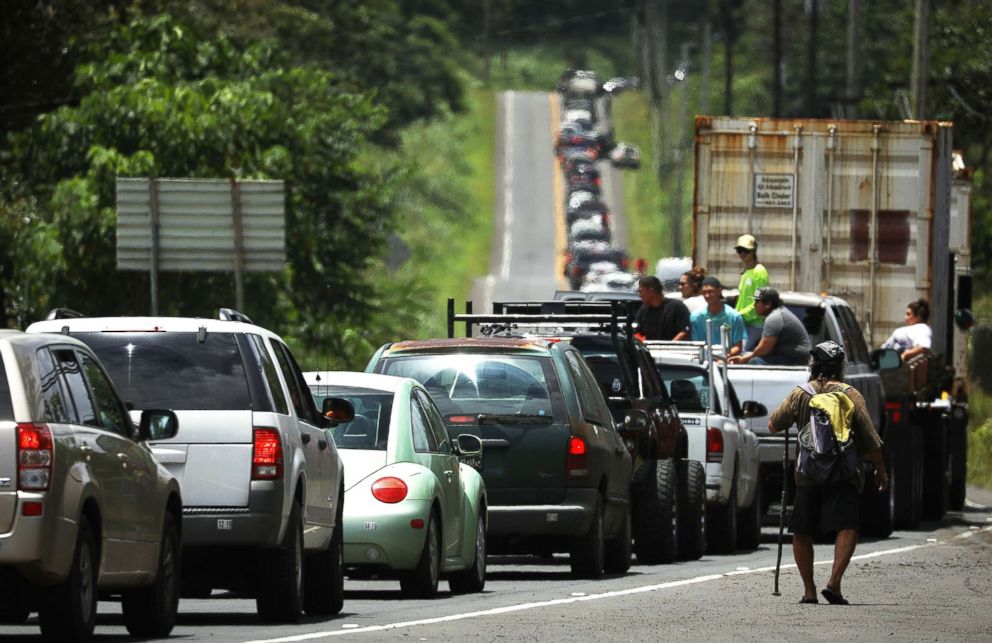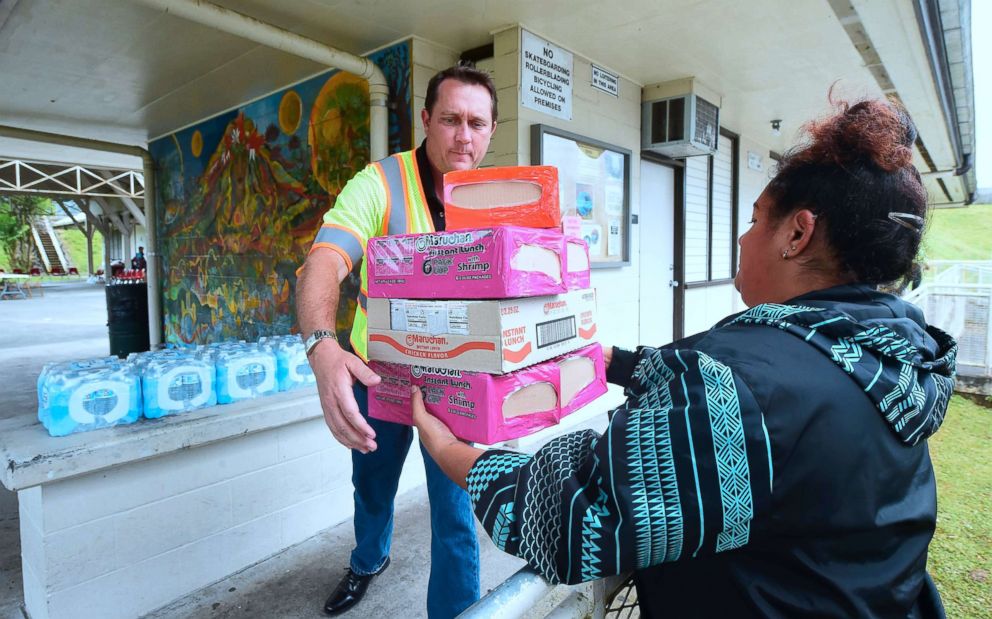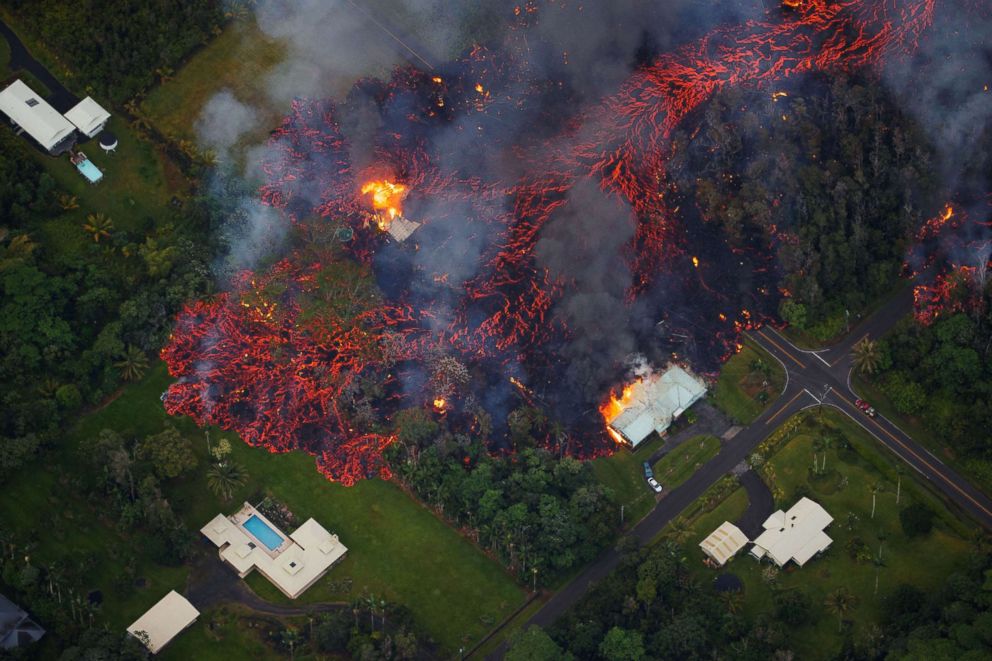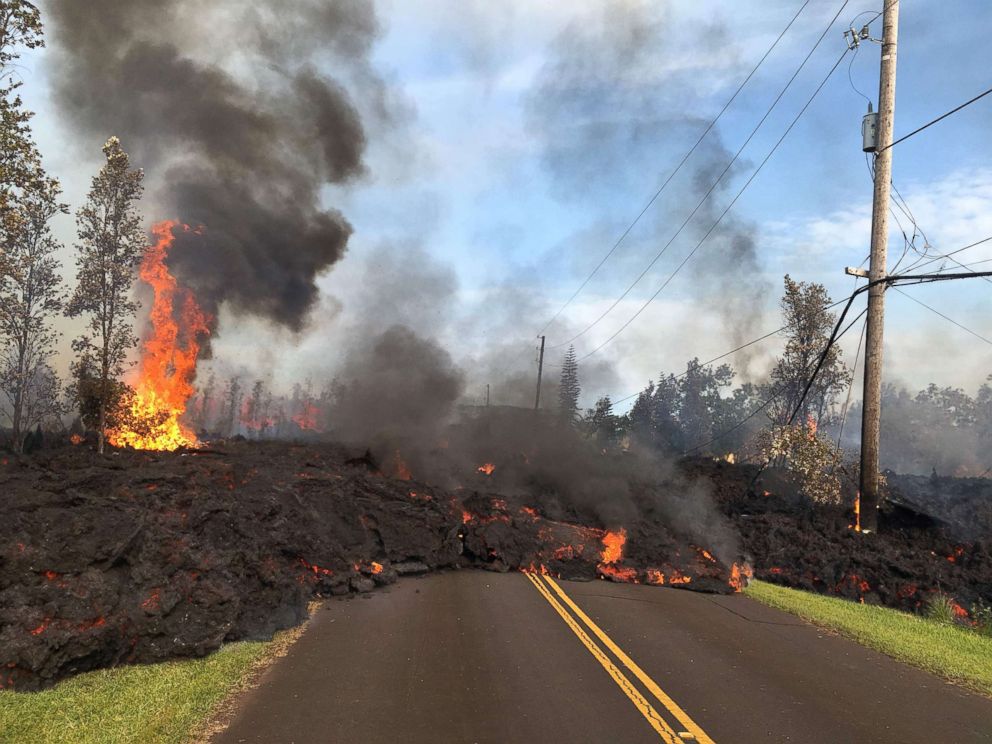Hawaii volcano sees new burst of volcanic ash as officials warn of 'continuous explosive activity'
Rock falls and gas explosions within Halemaumau Crater caused the ash plume.
A new burst of volcanic ash has been released from the Kileaua volcano today in what U.S. Geological Survey officials warn is “a phase of more continuous explosive activity.”
Rock falls and gas explosions within Halemaumau Crater caused the ash plume, the Hawaii County Civil Defense Agency said in a Facebook post today.
The plume also signifies that residents of the Big Island “need to expect that it will become more explosive," Rick Hazlett of the USGS told ABC News.
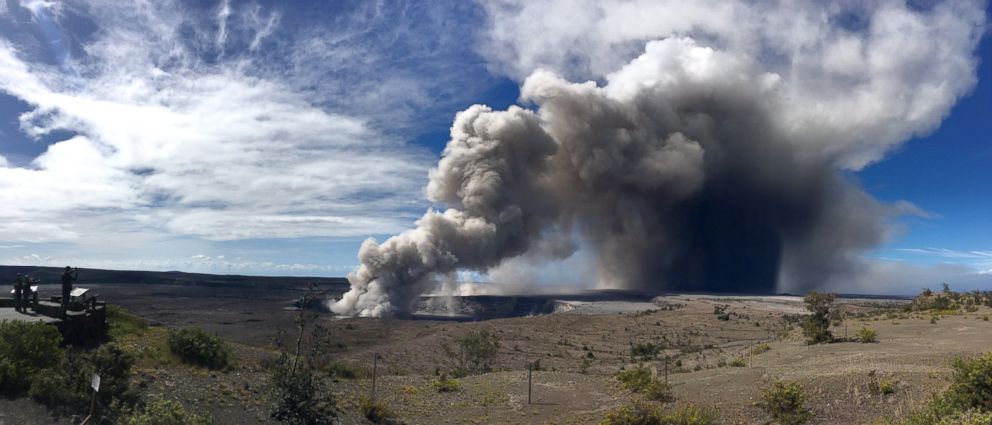
Excessive exposure to ash can make driving difficult and can irritate the eyes and respiratory system, so officials have also urged residents to minimize their exposure to it.
This new burst of ash comes hours after the Hawaii County Civil Defense Agency said a new fissure has opened up on the Big Island, bringing the total number of lava- and gas-spewing cracks to 20 in the wake of the May 3 eruption.
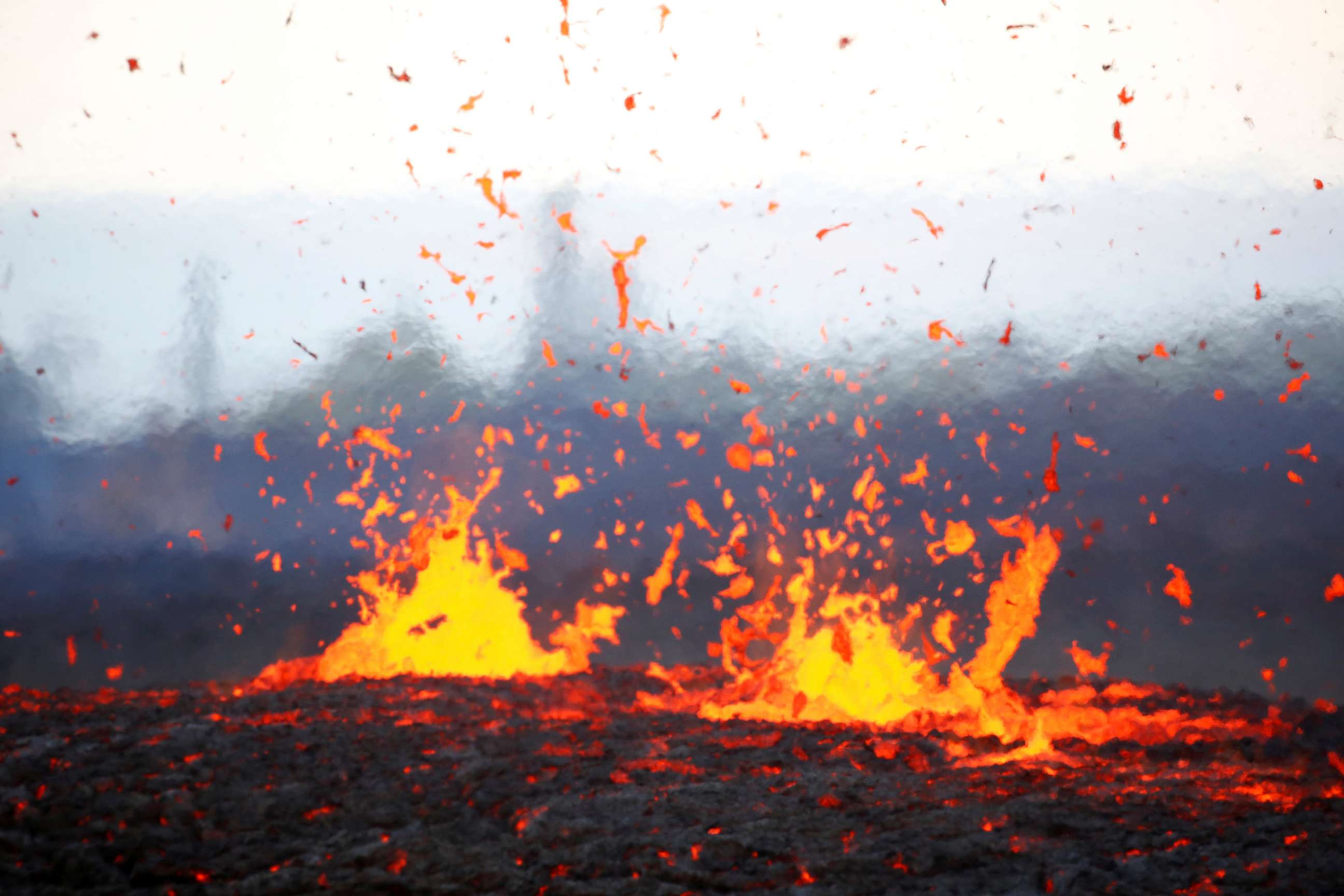
Officials Monday warned of "hazardous emissions of sulfur dioxide" in the Lanipuna Gardens subdivision.
The air quality there has been evaluated as a "condition red," which means the air could pose an immediate danger, the Civil Defense Agency said in a post on Monday. The gases are especially dangerous for the elderly, children, babies and people with respiratory problems, officials said.
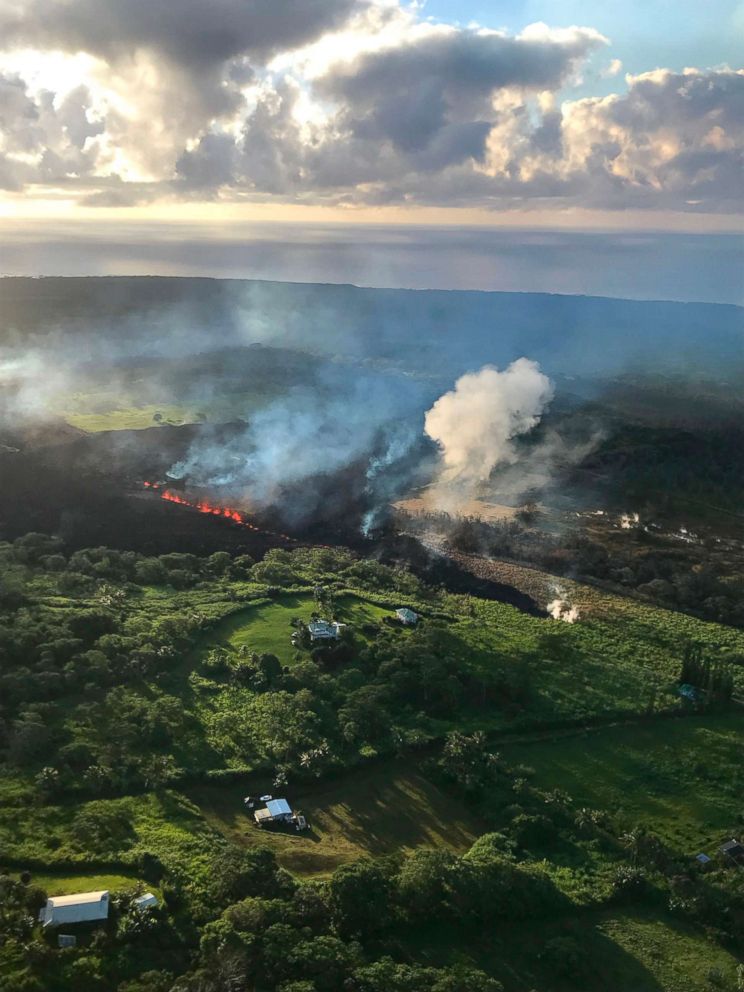
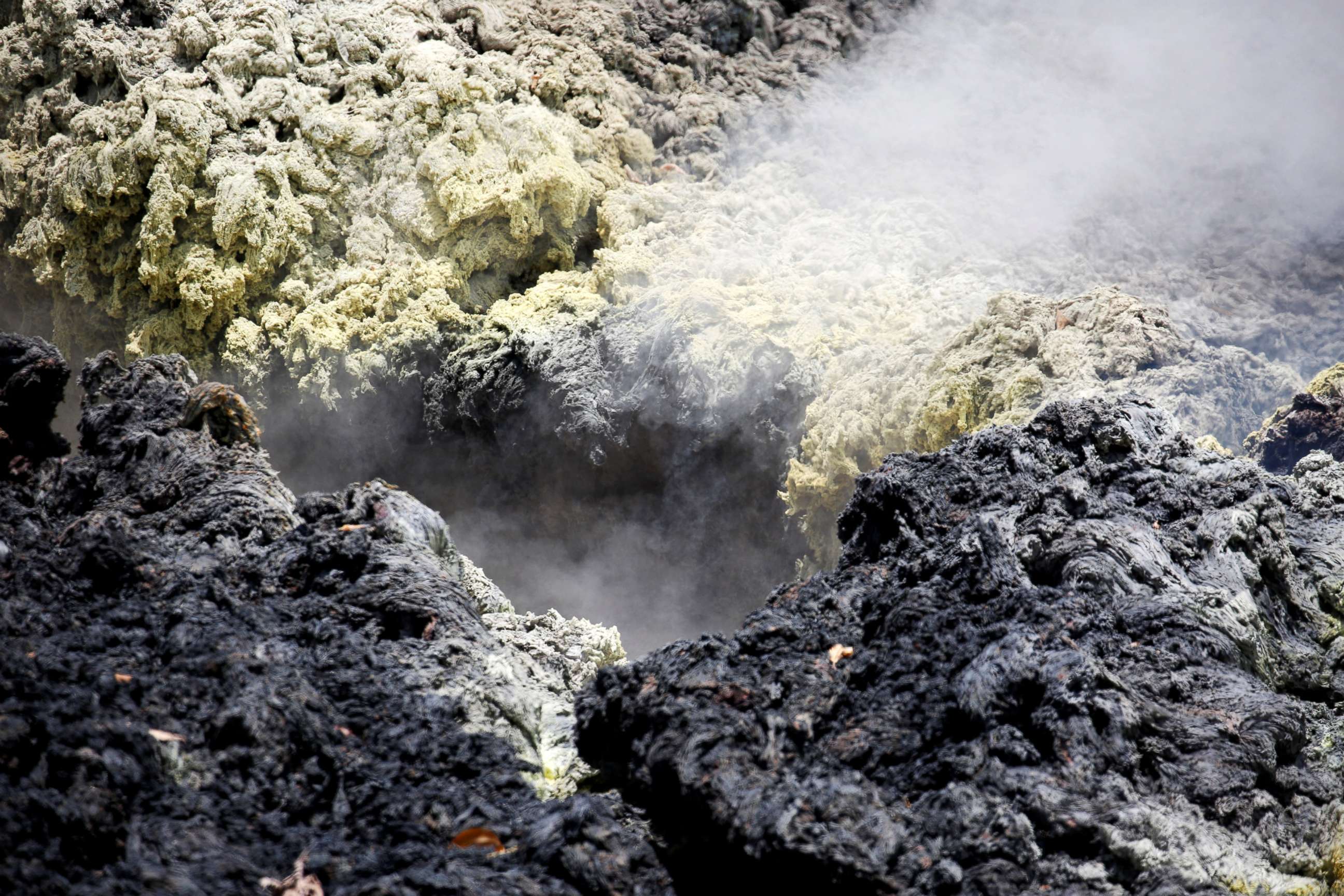
Following the May 3 eruption, which destroyed homes and prompted evacuations, smoke from the Kileaua volcano has even been visible from the International Space Station, according to an image posted by NASA on social media.
New eruptions from Hawaii volcano create more lava destruction
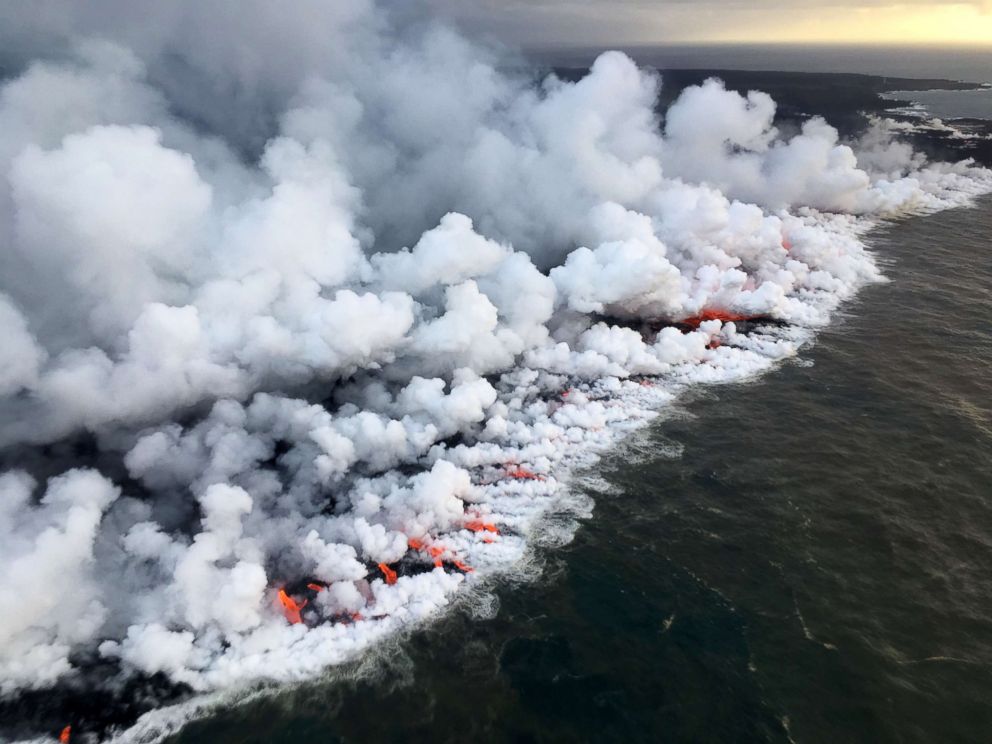
President Trump declared a major disaster in Hawaii following a request by the state's governor.
The order will make federal funding available to supplement state and local recovery efforts.
Hawaii declared a state of emergency on May 3, the day volcanic activity began.
